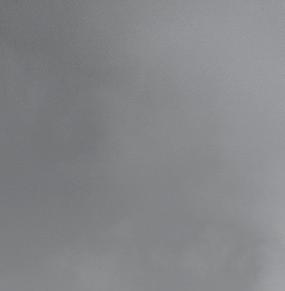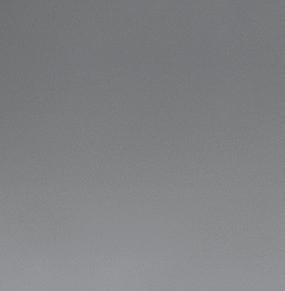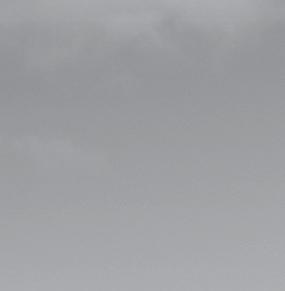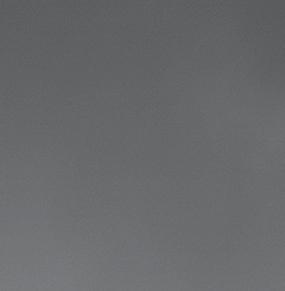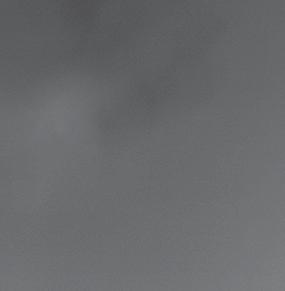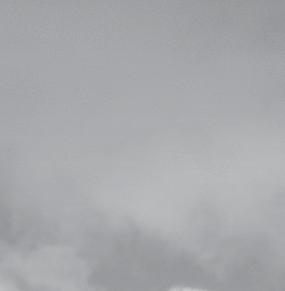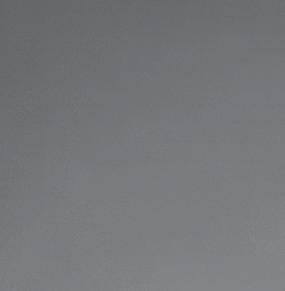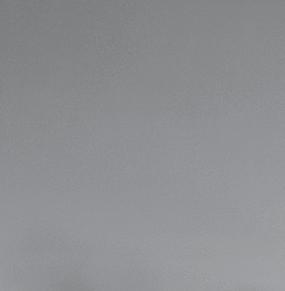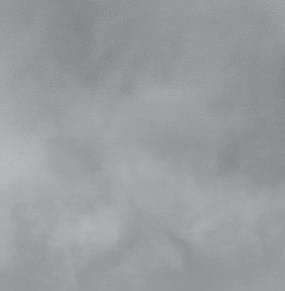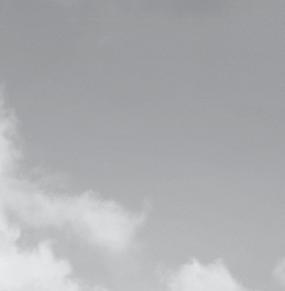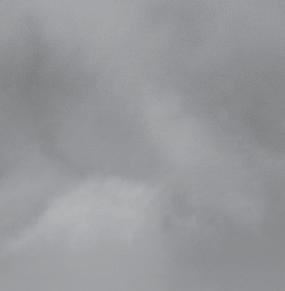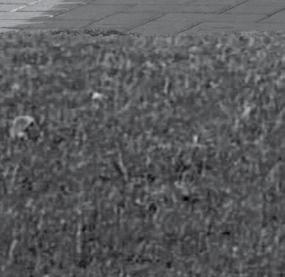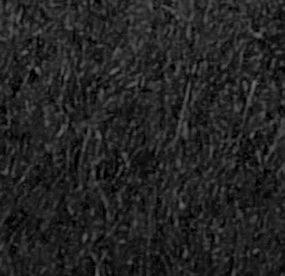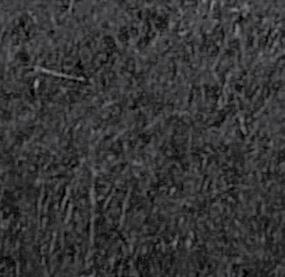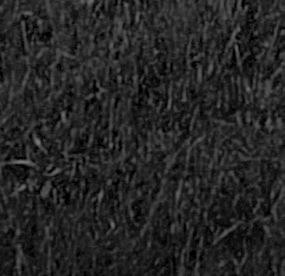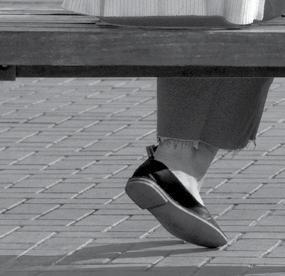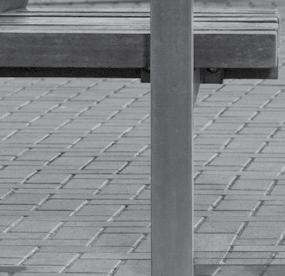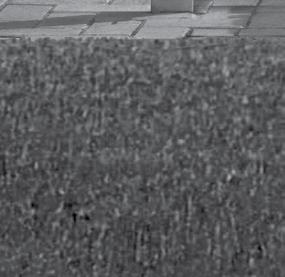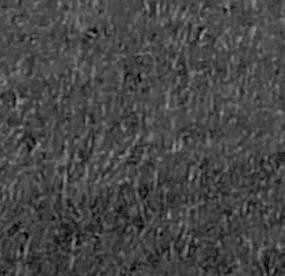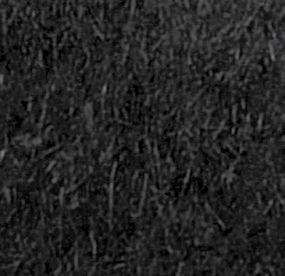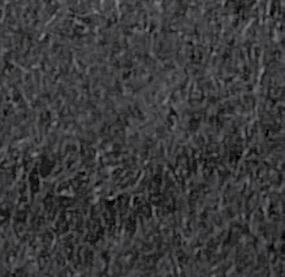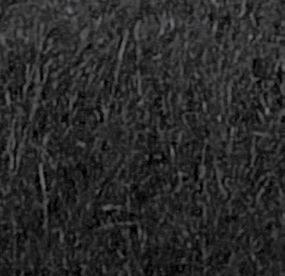


















We enable an inclusive environment for enhanced career prospects, focusing on accelerating equal opportunities for all.
At Namdeb, we are about more than mining. We are about mining for good.




- Fyodor Dostoevsky
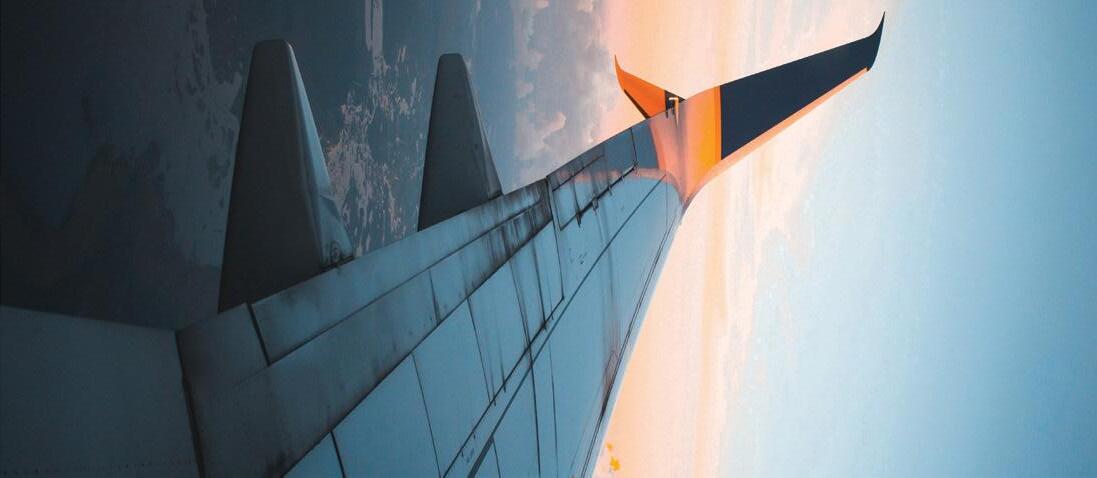


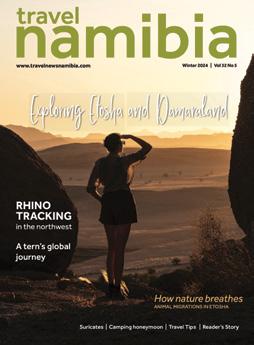
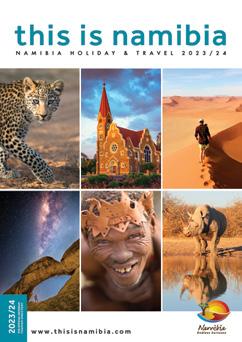

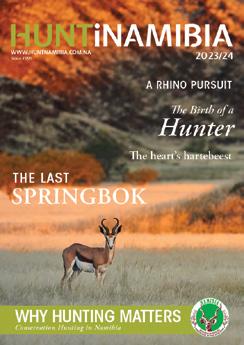
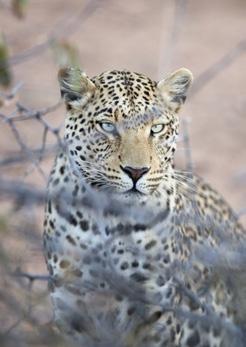

Meet the voices behind the incredible stories we share with Namibia each month. The pages of FlyNamibia are a collaboration of Namibian minds and passions and we hope you find a narrative that speaks directly to you amongst them.

Kirsty Watermeyer
Media and communication consultant, storyteller and writer. A Multi-media producer, presenter, voice artist and curious wellbeing enthusiast.

Rukee Kaakunga
A Windhoek-based communications specialist, blogger and freelance fashion writer. Contact her via email: rukeekaakunga@gmail.com

Charene Labuschagne
Art director, writer and presenter, she tells stories out of pure necessity for expression. Namibia is her favourite subject.


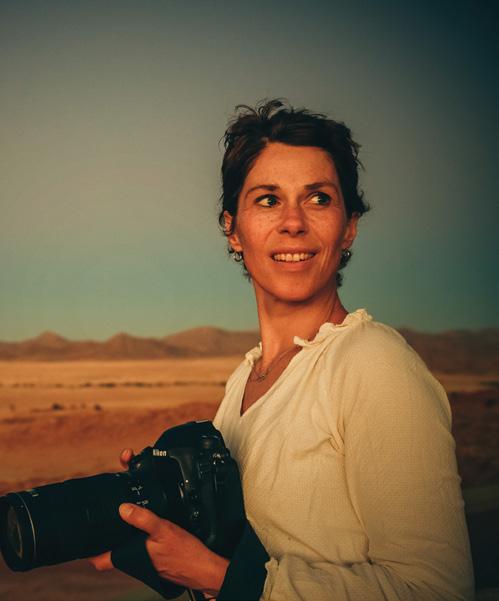
and storyteller, involved in the Africa Millimetre Telescope-project. Lives in The Netherlands, feels at home in Windhoek and loves to run mountains.

Bishop Media commentator and critic, climbing wall owner, voracious reader, sometime writer, active lifestyle proponent, family man, and coffee lover.

Willie Olivier A journalist, travel writer and adventure traveller for more than 45 years.
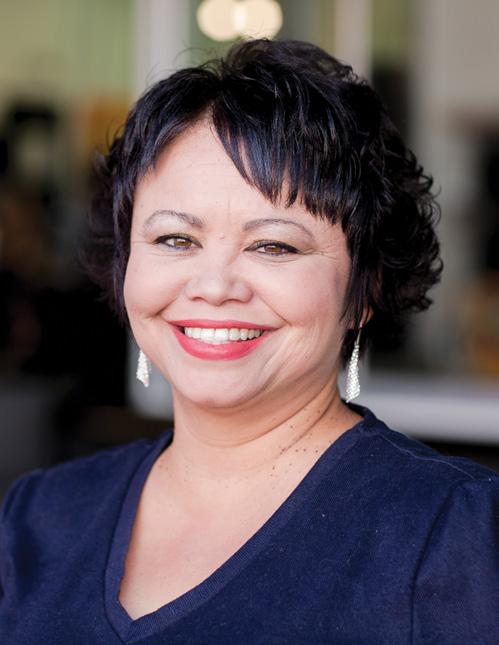
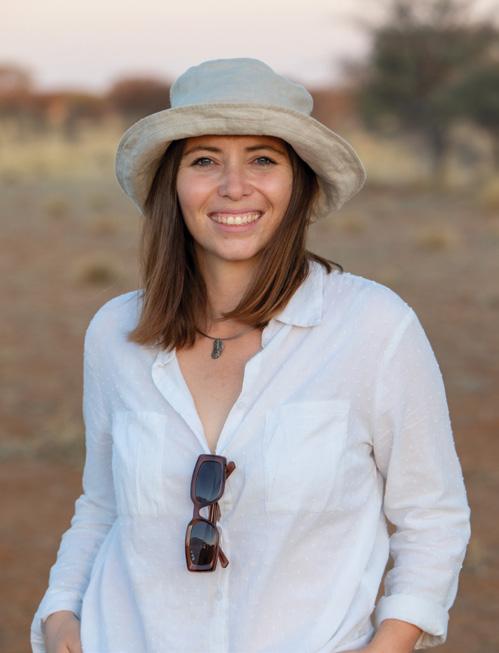
Maggie Forcelledo Paz News & Content Editor. Passion and dedication to keep the nation abreast with what’s happening on
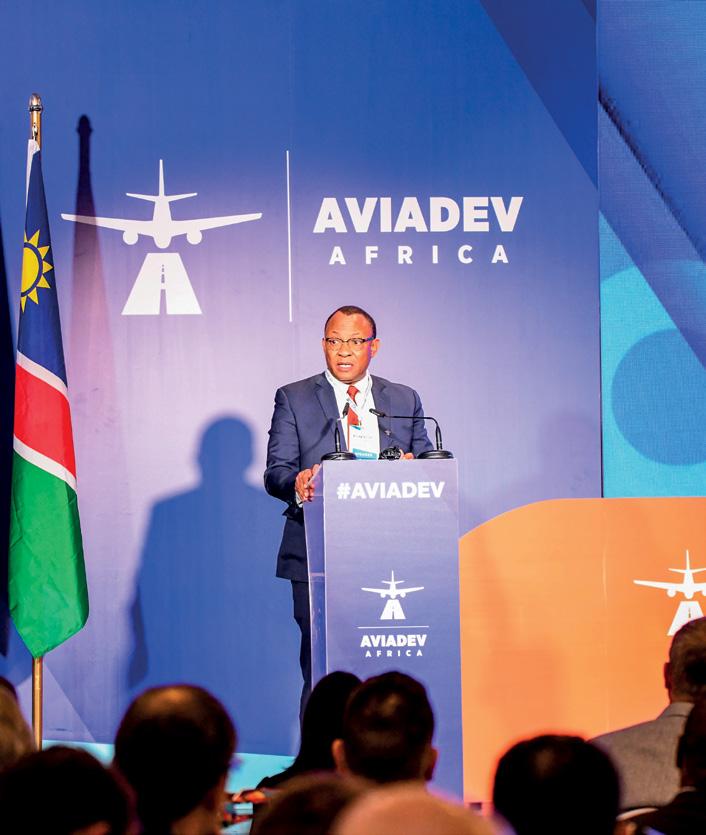
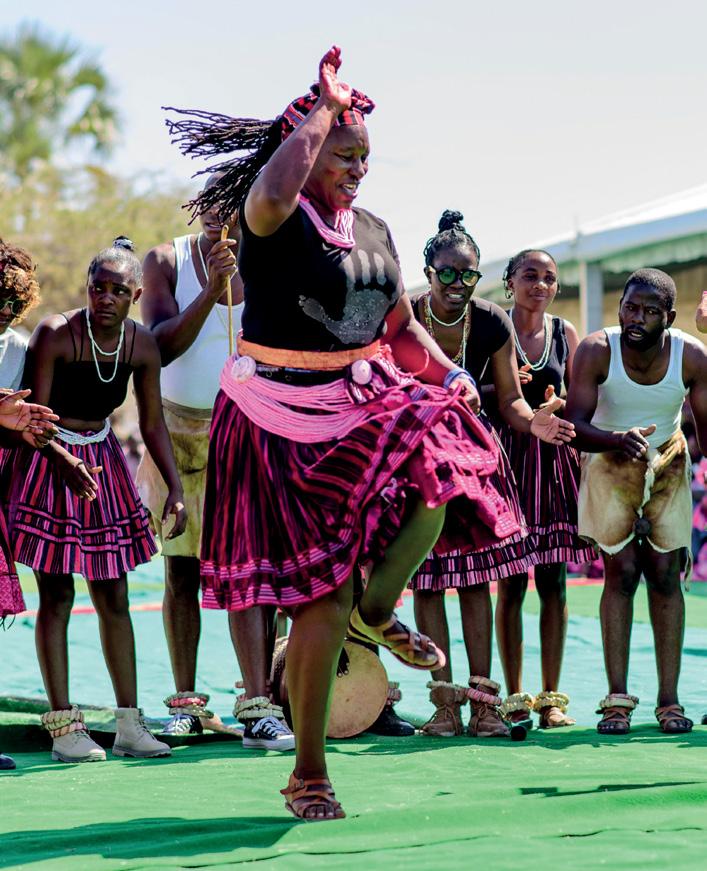


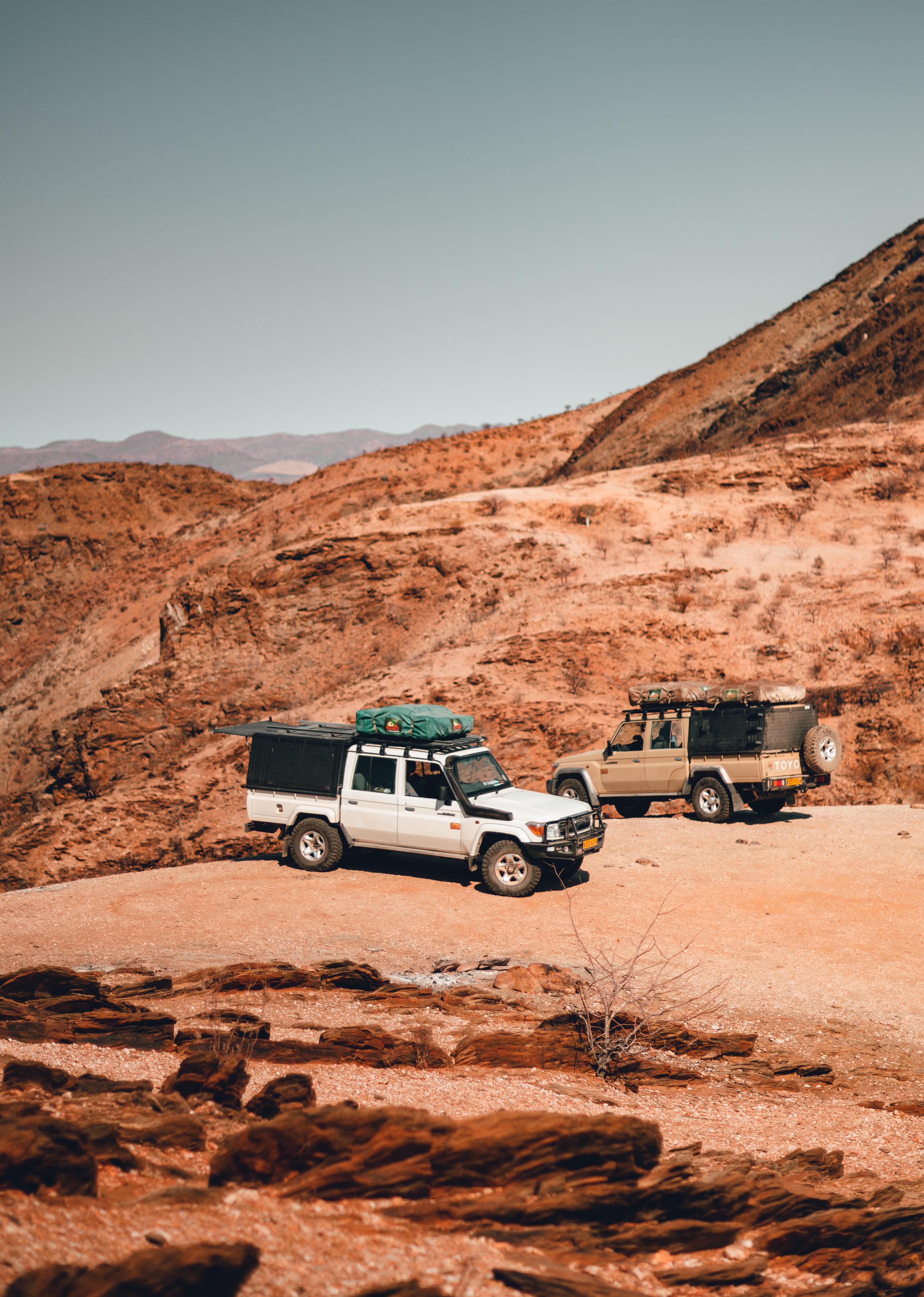
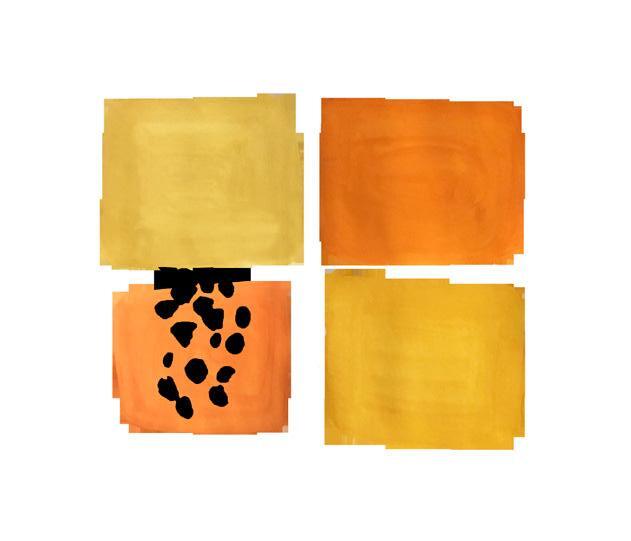

Select which tickets you would like to purchase: destinations, travel dates, morning/afternoon departure. We offer multiple fare options such as: Saver, Classic or Premium
Please enter names as they appear on passport or travel documentation
LOGIN to upload passenger details from previous booking.
More options for the perfect trip
Baggage policy, sporting equipment, over weight luggage or to add an additional bag(s)
Online check-in opens 24 hours before departure of the flight on Fly Namibia How can you make a
Cash payment at: Eros Airport, Ondangwa Airport, Oranjemund Airport
Online card transaction
Check-in opens 1h 30min before domestic flight and 2 hours before international flight.
Electronic Funds Transfer (EFT)
PayToday app Buddy SuperApp
flight information / rules
Read up on all our additional information regarding terms and conditions, and tick the selection box once completed to continue.
Fill in your payment details in our DPO paygate to make final payment.
Transaction confirmation will be sent to passenger email entered.
Windhoek Eros Airport Office
Ondangwa airport office
Rundu airport office
Katima Mulilo airport office
All major travel agents
Items NOT allowed in hand luggage:
Hosea Kutako airport office MAX 20kg Per person
Lotions and aerosols above 100ml, flammable aerosol, sharp objects, i.e. nail files, nail scissors, Leatherman, matches.

Check-in CLOSES 30 min prior to domestic flight and 50 min prior to international flight.




DEPARTURE FROM TO ARRIVAL DAYS
06:30 Eros - Windhoek
08:00
Ondangwa - Toivo Ya Toivo
16:20 Eros - Windhoek
17:50
Ondangwa - Toivo Ya Toivo
10:15 HKIA - Windhoek
12:55 Katima Mulilo
09:40 Eros - Windhoek
11:20 Oranjemund

Ondangwa - Toivo Ya Toivo 07:30 Mon, Tue, Fri
Eros - Windhoek 09:00 Mon, Tue, Fri
Ondangwa - Toivo Ya Toivo 17:20 Tue, Wed, Thu, Fri, Sun
Eros - Windhoek 18:50 Tue, Wed, Thu, Fri, Sun
Katima Mulilo 11:40 Wed, Fri, Sun
HKIA - Windhoek 14:15 Wed, Fri, Sun
Oranjemund 10:40 Mon, Tue, Thu
Eros - Windhoek 12:20 Mon, Tue, Thu
13:00 Eros - Windhoek Lüderitz 14:00 Mon, Tue, Thu
14:40 Lüderitz
Eros - Windhoek 15:40 Mon, Tue, Thu
DEPARTURE FROM TO ARRIVAL DAYS
10:15 HKIA -
10:15 HKIA - Windhoek Maun 11:15 Wed, Fri, Sun 11:55 Maun HKIA - Windhoek 14:15 Wed, Fri, Sun
in Partnership with

14:00 Cape Town Walvis Bay 16:15 Mon, Tue, Wed, Thu, Fri, Sun
16:50 Walvis Bay Cape Town 19:00 Mon, Tue, Wed, Thu, Fri, Sun
12:05 Cape Town Walvis Bay 14:20 Sat
14:55 Walvis Bay Cape Town 17:05 Sat
06:20 Cape Town HKIA - Windhoek 08:35 Mon, Tue, Wed, Thu, Fri
09:25 HKIA - Windhoek Cape Town 11:35 Mon, Tue, Wed, Thu, Fri
10:45 Cape Town HKIA - Windhoek 13:00 7 days a week
13:45 HKIA - Windhoek Cape Town 15:55 7 days a week
17:10 Cape Town

HKIA - Windhoek 19:25 Thu, Fri, Sun
07:00 HKIA - Windhoek Cape Town 09:10 Mon, Fri, Sat
DEPARTURE
10:00 HKIA - Windhoek Keerweder 10:55 Mon, Wed, Fri, Sat
11:20 Keerweder Swakopmund 12:10 Mon, Wed, Fri, Sat
12:50 Swakopmund Twyfelfontein 13:30 Mon, Wed, Fri, Sat
14:00 Twyfelfontein Ongava 14:40 Mon, Wed, Fri, Sat
15:05 Ongava Mokuti 15:30 Mon, Wed, Fri, Sat
16:00 Mokuti
HKIA - Windhoek 17:00 Mon, Wed, Fri, Sat
10:00 HKIA - Windhoek Mokuti 11:00 Tue, Thu, Sun
11:30 Mokuti Ongava 11:55 Tue, Thu, Sun
12:20 Ongava Twyfelfontein 13:00 Tue, Thu, Sun
13:30 Twyfelfontein
14:50 Swakopmund
15:40 Tue, Thu, Sun 16:05 Keerweder HKIA - Windhoek 17:00 Tue, Thu, Sun
07:30 Eros - Windhoek Rundu 09:00 Mon, Wed, Fri
16:00 Rundu Eros - Windhoek 17:30 Mon, Wed, Fri
*HKIA - Hosea Kutako International Airport
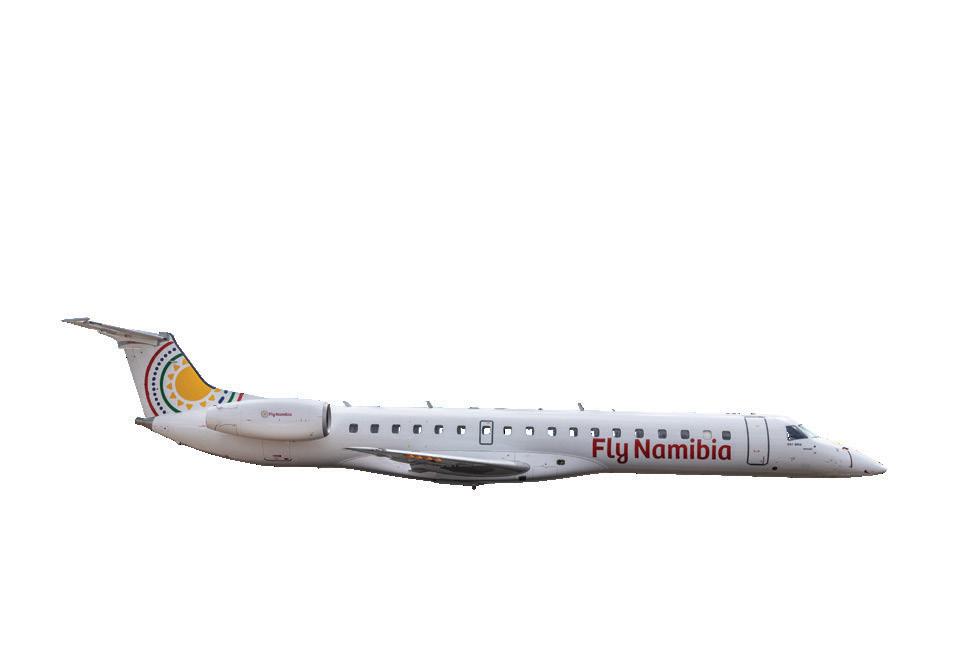
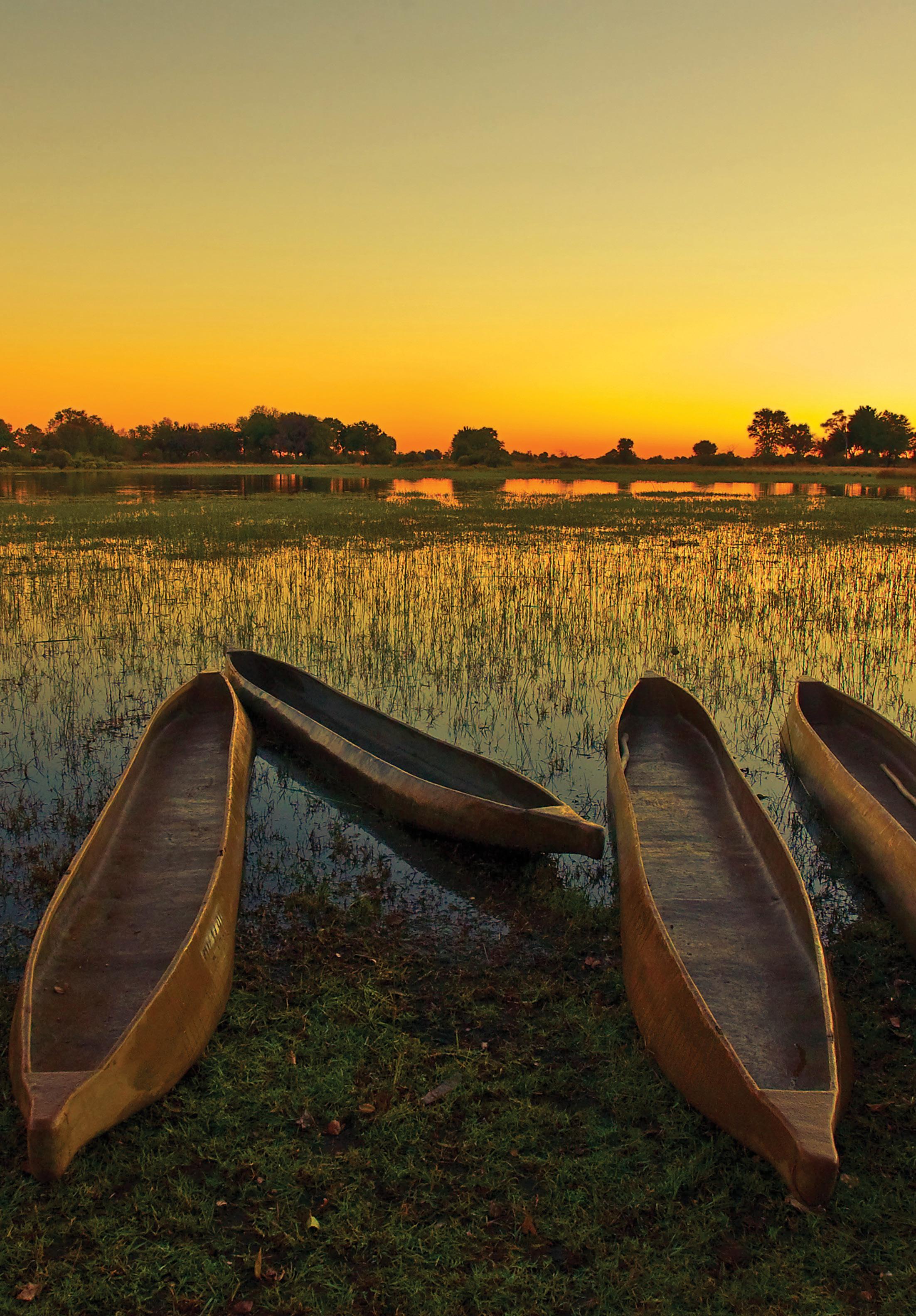

Dear Passenger,
As you settle into your seats and prepare for your journey, we at FlyNamibia extend our warmest welcome. We are delighted to have you aboard and are committed to making your flight a comfortable and enjoyable experience.
Route Expansion and Enhancements
We are thrilled to announce the launch of our new route from Windhoek to Maun, starting on 3 July. This exciting connection will open up more opportunities for you to explore the breathtaking landscapes and wildlife of Botswana. Maun, known as the gateway to the Okavango Delta, offers unparalleled natural beauty and wildlife experiences. We are delighted to make this incredible destination more accessible to our passengers and support the regional tourism industry through this expansion.
In addition to the new Maun route, we have made significant enhancements to our flight operations to optimise connectivity and stimulate tourism in the Zambezi Region. Effective 3 July, FlyNamibia Katima Mulilo flights will transition from Eros Airport to Hosea Kutako International Airport, facilitating improved access to key destinations. This strategic initiative aims to optimise passenger traffic to Katima Mulilo and promote tourism growth in the Zambezi Region.
To further enhance connectivity, we are introducing an innovative flight routing system designed to link Windhoek (Hosea Kutako International Airport), Maun, and Katima Mulilo. From 3 July to the end of October, select flights will follow the route: Windhoek to Maun to Katima Mulilo and
back to Windhoek on designated days (Wednesdays, Fridays, and Sundays). This new system will ensure seamless travel and unlock the region's tourism potential, driving economic development.
the Face of FlyNamibia
In June, we bid farewell to Taimi Nuunyango, our brand ambassador, the Face of FlyNamibia, as her one-year tenure came to an end. We extend our heartfelt gratitude to Taimi for her exceptional representation of our brand. Her infectious personality and unbridled optimism were a source of joy to our entire airline and the thousands of Namibians she connects with on a daily basis. Thank you for sharing your vibrant self and wonderful spirit with us over the past year, Taimi! We hope your FlyNamibia adventures are as cherished as the memories we were privileged to create with you. Keep an eye on our social media pages for the launch of the next search for the Face of FlyNamibia in July.
At FlyNamibia, our mission is to connect you with the places you love and the people you care about. We are continually striving to enhance your travel experience with us, whether through expanding our routes, improving our services, or opening new offices to better serve you. Your comfort, safety, and satisfaction are our top priorities.
Thank you for choosing FlyNamibia. We wish you a pleasant flight and look forward to serving you again soon.
Warm regards, The FlyNamibia Team
Unique local lifestyle brands we're loving, and why you should too
We love their wool-lined leather slippers. In the midst of a chilly winter, your perfect accessory is here. Beat the cold with the L E D leather and wool shoe range of unisex slippers and boots. Crafted from their highest standard of full-grain leather and lined with cushioning sheep’s wool, the L E D slippers and boots promise unparalleled warmth and comfort. Finished with strong stitching and a quality rubber sole, these shoes will be your secret weapon for winter in Namibia. The anklegrazing slippers come in tan brown leather and are available in unisex sizes 5-11. The low-calf boots come in tan brown leather, available in sizes 6-9, and denim from sizes 9-11.
Shop online at www.leonengelbrecht.com
@leonengelbrechtdesign
+264 81 251 2169
30 Lazarett Street, Southern Industrial, Windhoek


We love this intimate stay in Swakopmund. Spacious, tranquil and full of unique Namibian character best describes Driftwood Guesthouse. This 8-room guesthouse is situated in a peaceful, residential corner of the much-loved coastal town, just a short bicycle ride from the restaurants and sightseeing spots. They even have bicycles available for rent to explore the quiet, cool town. Defining the laid-back yet upmarket coastal atmosphere associated with Swakopmund, the guesthouse boasts cosy and calming decor with extra attention to comfort. A short stroll takes you to an expansive, less frequented beach ideal for families. Driftwood Guesthouse is the ideal stay for those seeking peace, comfort and modern amenities.
+264 64 462 628 (Reception) | +264 64 405 045 (Reservations) info@driftwood-namibia.com


We love the life-changing skincare range they stock. Meraki Wellness Centre prides itself in offering the very best of dermatologically tested skincare products by Optiphi. Geared towards acne and pigmentation-prone skin types, the Optiphi range available at Meraki is a tried and trusted solution for many. With a strong understanding of skin anatomy and its function, the therapists at Meraki have mastered the art of combining professional skincare services with home care packages. Whether you are a skincare newbie seeking visible results, or a long-time lover of great products, Meraki Wellness Centre can consult and guide you to the best option for your unique needs.
+264 81 247 8077
Meraki Wellness Spa: 150 Olof Palme Street, Eros, Windhoek
Meraki Wellness Centre: Unit 16, The Village, Liliencron Street, Windhoek


We love their exceptional offerings, not only with regard to accommodation but also the event and conference facilities. With a focus on providing unparalleled experiences, Droombos redefines corporate conferencing by providing state-of-the-art facilities, including indoor and outdoor spaces, breakaway rooms and top-notch audiovisual equipment. Their approach emphasises opportunities for connection and growth, complemented by unique team-building activities and customised catering options. Moreover, their stunning on-site accommodation ensures that events are more than just gatherings – they are unforgettable experiences, seamlessly blending business with leisure.
www.droombos.com.na reservations@droombos.com.na or events@droombos.com.na +264 81 872 2613 | +264 83 288 8352 | +264 61 250 238


Are you a Nam or SA based lifestyle brand? List your label with us for only N$1,000 per month for 6 months | fly@venture.com.na

Can a landscape exhale and inhale with the ebb and flow of life? Do animals adjust their movement patterns in response to shifts in resource availability? These fundamental questions regarding the characteristics of wilderness also extend to fenced areas and national parks. The evidence unequivocally confirms that animals pay little heed to man-made borders, whether they be physical fences or legally designated boundaries.
For over three years, a multidisciplinary team comprising students, scientists, economists and conservationists have been investigating animal movements and migratory patterns in and around Etosha National Park. Leveraging cutting-edge technology and deploying satellite trackers on over 70 animals of different species, they are unravelling a research-backed understanding of these animals’ movements and the extent to which they are constrained by boundaries. Astonishingly, their findings reveal that animals are not bound by these barriers. Associate Professor Morgan Hauptfleisch, from the Nature Conservation Department within the Natural Resource Sciences at Namibia University of Science and Technology, elucidates, “In just one month, with cameras along three known movement corridors, we recorded 11,000 movements across fences and boundaries, including through the red, or veterinary, line.”
THE
Their research highlights the fact that fences fragment habitats, alter environments and pose risks of injury and mortality to wildlife, hindering their movement across landscapes. Meanwhile, the breaches in the fence are observed to provide substantial advantages to wildlife, moderating grazing pressure across regions, mitigating ecosystem degradation and enhancing genetic diversity as herds interact with diverse mating partners.
Morgan explains that these movements are vital for the animals’ survival and well-being and that with the added pressure of climate change, suitable feeding grounds are shifting beyond park boundaries, magnifying the need to move across boundaries. In a dry landscape, the animals constantly seek out water and food to sustain themselves. The concept of demarcating areas to restrict movement is foreign to animals; to them, movement is as intrinsic and instinctual as breathing.
“When the animals breed, their numbers go up and they need more space. In one example we were tracking eland, kudu and springbok. We tracked them over time and would see them hanging out in one small area around a waterhole. Then they would suddenly move with purpose, migrating up to 100 kilometres in three days and what we found was that, without exception, the spots they would move to offered them grazing with 30% more energy than where they had been before. They instinctively know exactly where to go. What we also found
was that they do not just move after rains; it is not a seasonal migration that drives these decisions.”
With an infectious grin, this enthusiastic scientist eagerly shares his data, allowing you to witness the precise routes and tracks of individual animals. Among them are elephants traversing between Etosha National Park and Etosha Heights, one of Namibia’s largest private reserves, which shares a 65-kilometre-long boundary with the park. Morgan reveals that these collared animals exhibit such extensive movement that one might anticipate them using the park’s entrance gate. However, surprisingly, they are not. Instead, they are breaking through fences, performing a mesmerising dance of movement across landscapes and boundaries, as depicted on Morgan’s screen.
With each fence breakage, there is a heightened risk of injury to the animals, necessitating replacement at a cost to the Ministry of Environment, Forestry and Tourism. Morgan emphasises the frequency of these incidents, recounting a recent episode where an elephant bull was entangled in wire, which prompted immediate action. “It happens all the time,” he laments. “Because it’s the red line that gets broken, by law it has to be fixed. It’s a constant cycle of repair due to frequent breaches. Now, on the southern boundary, they’ve established a breathing buffer to mitigate these issues.”
Turning to his computer, Morgan selects a single example, one elephant, to underscore his point. “If you examine the data and quantify the number of fences breached over the course of a year, this particular elephant herd made a staggering 144 breaches between the park and commercial farms, many of them of the veterinary cordon fence.”
The veterinary cordon fence, also known as the red line, is a pest-exclusion fence that serves as a delineation between northern Namibia and the central and southern regions. Originally established as a political demarcation boundary in 1907, the red line carries significant historical weight, deeply intertwined with Namibia’s colonial past. Historically, the northern areas were predominantly subject to indirect colonial rule through traditional authorities. Over time, the line has shifted, with an actual fence eventually erected in the early 1960s to contain outbreaks of foot and mouth disease in the north from spreading to the farms in the south. Today,






the red line plays a pivotal role, granting Namibia its unique status to export meat across the European Union.
Morgan is optimistic about the potential of this research to drive change in outdated rules and regulations. “There may be a need for policy change,” he asserts. “Currently, we’re analysing this data from an economic perspective. What is the economic cost benefit of either establishing migration corridors along the red line or removing it altogether? We can leverage this information to advocate for policy reform,” Morgan explains, emphasising the importance of raising awareness among policymakers, particularly within the European Union (EU). “I have worked with renowned wildlife veterinarian Dr Mark Jago for many years, and he believes that if the EU understood the impact of their policies on wildlife, they may be inclined to revise them.” Morgan adds that the team has already published this information, making it public knowledge. “With our wealth of empirical data and the EU’s stringent environmental regulations, we have the opportunity to demonstrate how their current policies are causing significant environmental harm, prompting them to reconsider which measures are most ideal to control livestock disease while reducing effects on wildlife and conservation.”
In regions characterised by semi-arid climates and erratic rainfall patterns, the migratory behaviour of large herbivores emerges as a vital strategy for survival, allowing them to access resources across vast territories. Namibia boasts vast free-roaming wildlife populations, including the largest freeroaming population of black rhinos in Africa and the world’s largest cheetah population. Perhaps it is time we initiate conversations regarding the migration and movements of animals across this vast landscape.

In regions where fences have been removed and animals are permitted to roam freely, we observe benefits that extend to the entire ecosystem.
“Across Africa, the expansion opportunities for elephants are becoming less. We have expansion opportunities. This is what has happened at Etosha Heights – it created a mini Etosha with this semi-open system. This could be just the beginning. There is a massive opportunity for increasing conservation land with commercial farms by connecting them. In the areas outside of the park you either find a communal conservancy or a private farm. Some have converted to wildlife, but others are still farming cattle in an area where the vegetation and rainfall make commercial farming extremely hard.”
EMBRACING THE RHYTHMS OF LIFE
Morgan elaborates on the seasonal breeding patterns of Etosha, highlighting the additional strain it places on the park’s boundaries. “Expansion is beneficial for a park; breathing is beneficial for a park,” he asserts. “In regions where fences have been removed and animals are permitted to roam freely, we observe benefits that extend to the entire ecosystem.”
As ecosystems breathe, they thrive. In the rhythmic dance of migration, ecosystems pulse with vitality, nurturing the interconnected web of existence. Just like the lungs of the planet, they expand and contract, responding to the natural rhythms of life. By allowing wildlife the freedom to move, ecosystems flourish, fostering biodiversity, resilience and harmony. What we are beginning to realise, is that this breath underscores the ebb and flow of movement that lies at the heart of all life on Earth.
Kirsty Watermeyer
First published in the Winter 2024 issue of Travel Namibia magazine. Subscribe to Travel Namibia here: www.travelnewsnamibia.zinioapps.com/shop

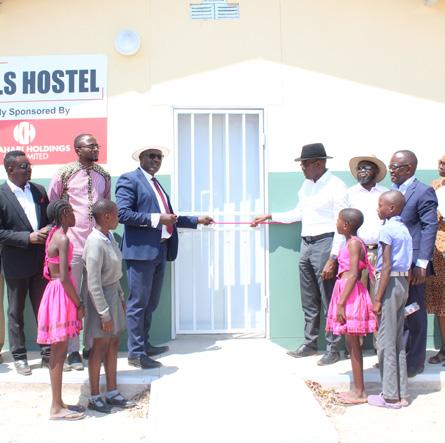
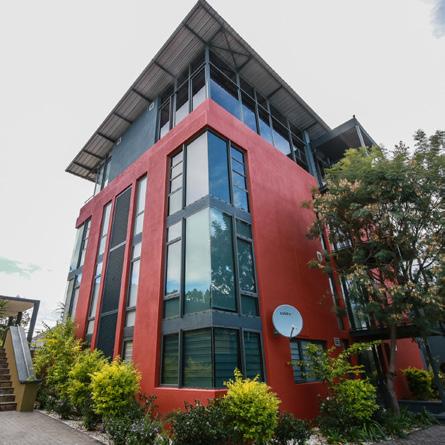


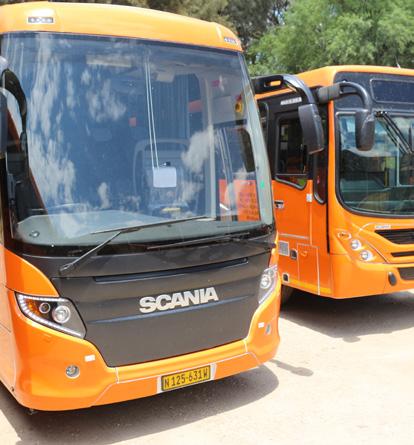

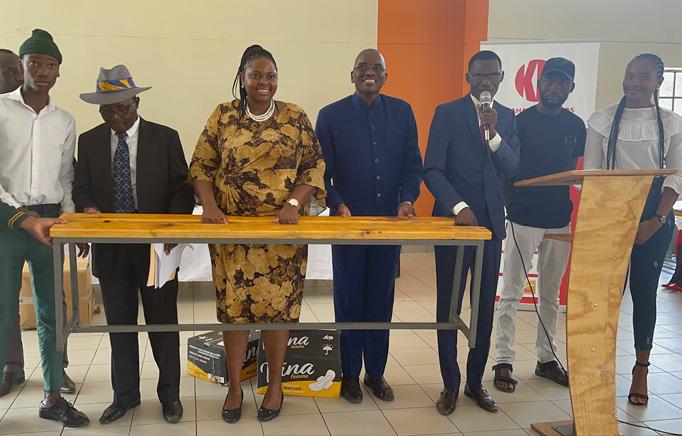
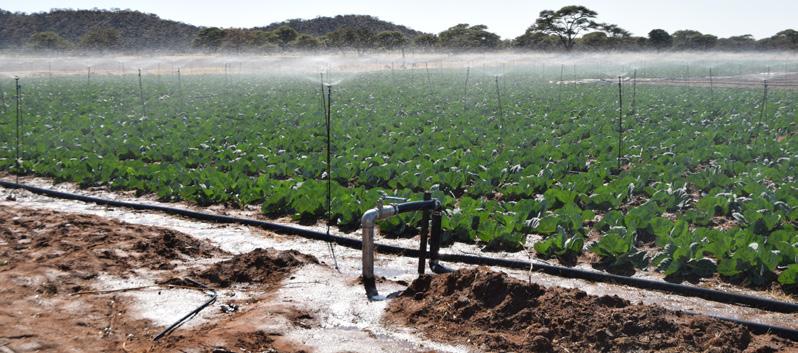
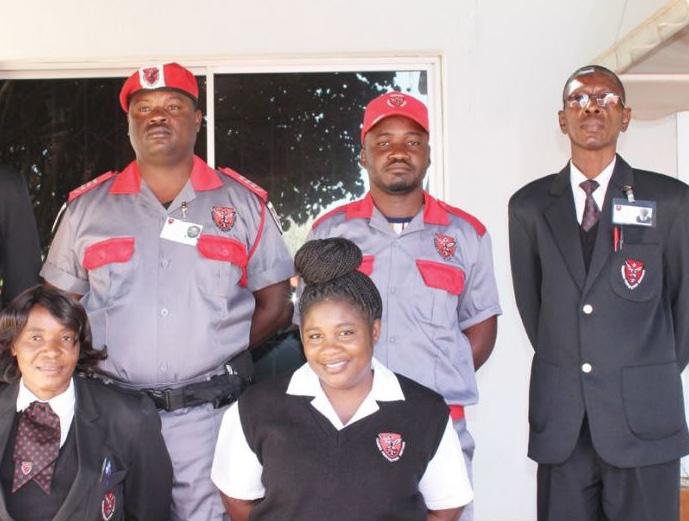



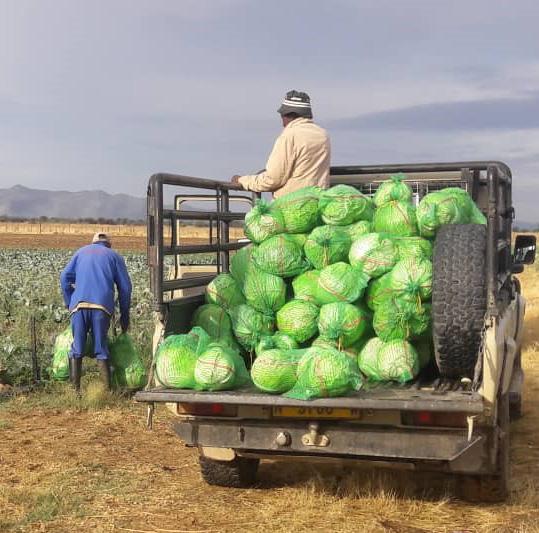



As we celebrate our 35th Anniversary, we would like to thank all those who have been part of our journey from humble beginnings.



• Melt the butter in a pan, add the cake flour, then the cream, and stir to prevent lumps from forming.
• Add the remaining ingredients. Pour over the steak potjie.
• Cover and bake at 180°C for 1 hour.
• Remove the lid and bake for another 30 minutes to brown the top.
• Serve with spinach mashed potatoes.
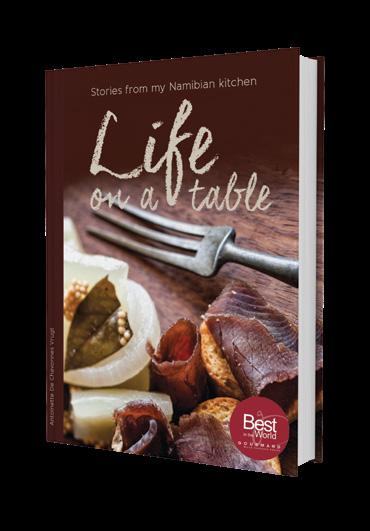
To order your copy contact Bonn Nortjé at Venture Publications: bonn@venture.com.na
This dish can be cooked in the oven or in a “potjie” on moderate coals.
1 whole sirloin of venison (1.5–2 kg)
125 ml self-raising flour
5 ml dried parsley
2.5 ml BBQ spice
5 ml salt
2.5 ml black pepper
Olive oil
• Cut the meat into slices (1 cm thick).
• Tenderise with a meat hammer.
• Mix the flour and spices together and dip each individual steak into the flour mixture.
• Sear the meat on each side in olive oil in the pan.
• Keep aside until all the steaks are seared.
250 g streaky bacon, chopped
2 onions, thinly sliced
6–8 cloves of garlic, crushed
200 g button mushrooms, sliced
½ green, ½ red and ½ yellow pepper, cut into strips
1 carrot, peeled and julienned
Olive oil
• Fry all the veggies and bacon together in olive oil until glazed.
• Layer the steaks in an ovenproof dish with the veggie mix.



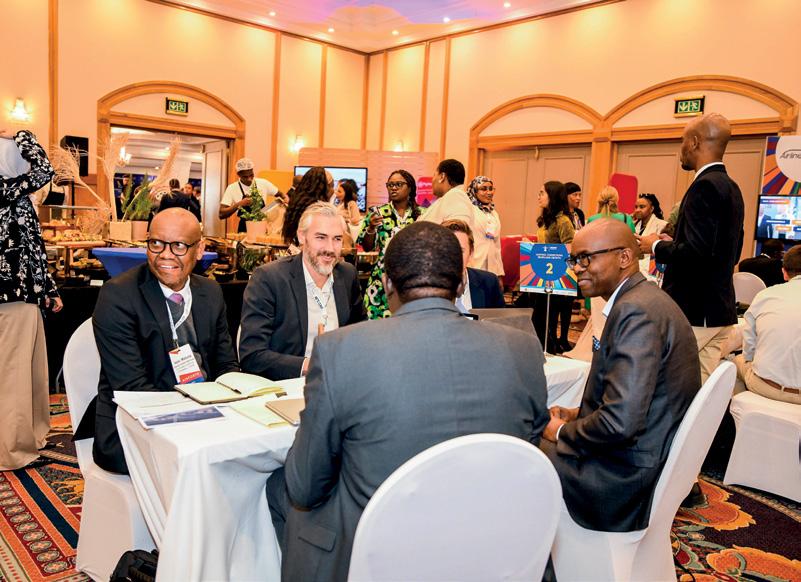


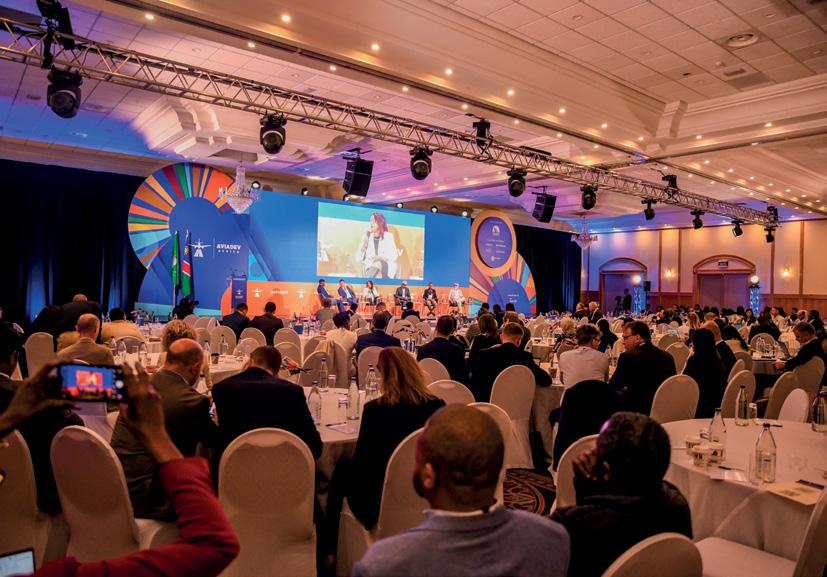





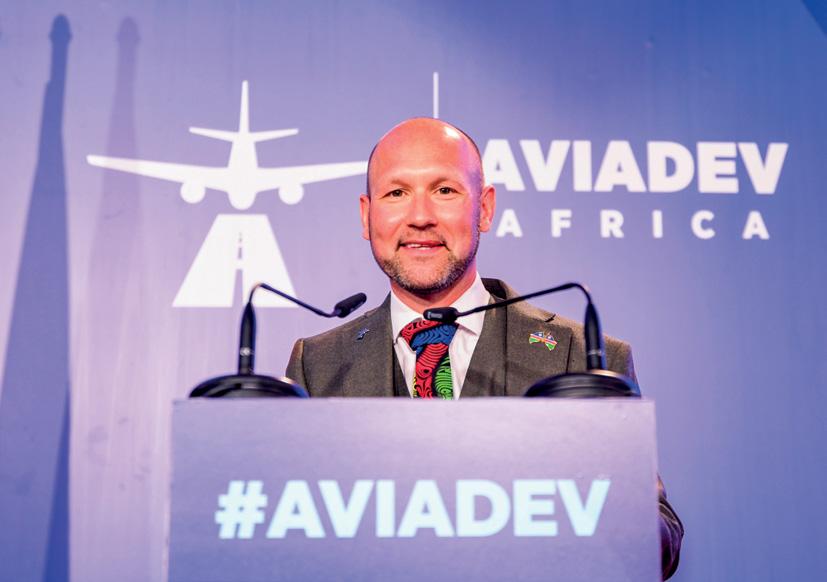



The AviaDev Africa 2024 conference, held from 19-21 June at the Movenpick Hotel in Windhoek, Namibia, was an exceptional gathering that brought together key stakeholders from across the aviation industry. As the premier forum dedicated to enhancing connectivity within Africa, AviaDev Africa provided a platform for airports, airlines, tourism authorities, governments, and industry suppliers to engage in meaningful dialogue and establish lasting connections.
The conference kicked off with a warm welcome reception hosted by the Namibia Tourism Board, offering attendees a taste of Namibian culture and an opportunity to network in a relaxed environment. The Honorable John Mutorwa, Deputy Prime Minister of Namibia, officially opened the event the following morning, setting a positive tone for the days to come.
Martin Jansen van Vuuren delivered a compelling macroeconomic keynote, highlighting global economic trends and their implications for the aviation industry. Subsequent sessions included a CEO panel discussion and an unveiling of Africa's top unserved routes by Geert Lemaire from Airbus. A technology panel explored the future of aviation, focusing on the role of AI and other innovations in enhancing efficiency and profitability.
The Air Route Development Masterclass, hosted by Natalia Rosa of the SADC Business Council, featured experts from airlines and tourism boards discussing strategies to open new air routes and leverage digital marketing for destination awareness. Meanwhile, the AviaDev Real Estate event, led by Marcel Langeslag and Nelly Alandou from NACO, delved into maximising airport real estate offerings to diversify revenue streams and build resilience.
Sessions included presentations from various airport projects across Africa, showcasing investment opportunities and development plans, while post-lunch activities shifted to the meeting and exhibition area, where attendees engaged in pre-arranged one-to-one meetings to explore potential partnerships and collaborations. For those not involved in meetings, round table discussions addressed safety incidents and challenges in African aviation, as well as strategies for engaging stakeholders in route development.
The penultimate day concluded with a memorable Gala Reception at Droombos luxury estate, hosted by the Namibia Airports Company and the Namibia Civil Aviation Authority. This event provided another excellent opportunity for networking in a beautiful setting.
The final morning began with a charity run supporting the Namibian Aviation Training Academy, followed by an inspiring session on Africa's alternative fuel potential. Discussions throughout the day included sourcing aircraft for expansion, and strategies to protect profitability and build resilience in the face of unforeseen challenges.
Tim Harris of Helm Growth Advisors unpacked FlyNamibia's vision for growth with the airline’s Managing Director, Andre Compion in a one-on-one discussion. Their conversation highlighted not only the difficulties in starting and managing a small airline in southern Africa, but the tremendous potential on the horizon given Namibia’s developmental trajectory and the confidence and perseverance of FlyNamibia’s approach to its growth.
The final afternoon featured a last round of one-to-one meetings, with many attendees expressing optimism about the potential for new routes and partnerships.
With 560 participants, including 20 CEOs, 39 airlines, and 1,200 pre-arranged meetings, the 8th edition of AviaDev Africa set a new attendance record. This success is a testament to the efforts of Jon Howell, the CEO and founder of AviaDev, and his dedicated team. The Namibia Airports Company, as the host, played a crucial role in facilitating a seamless and impactful event.
AviaDev Africa 2024 not only highlighted the importance of connectivity on the continent but also fostered a spirit of collaboration and innovation that will undoubtedly shape the future of African aviation. The conference concluded with a commitment to continued progress and a post-show report to capture the key insights and discussions that took place.
FlyNamibia is proud to have been an official airline partner of AviaDev Africa 2024.
For more information visit www.aviationdevelop.com




We are halfway into 2024 and over 16,000 Namibian people have visited the mobile planetarium show of the AMT project. Now we are about to receive an international award for our efforts. On the one hand we are beyond proud and grateful about how far we have come; on the other hand we are looking forward to the future and we want to inspire even more Namibians with our space dome. Marc Klein Wolt, director of the project, sums it up: “We have only just begun. The most wonderful thing is that it’s in the hands of the students who are the ones driving it and making it possible. That’s why I am so excited about this month’s award ceremony in the UK for the Annie Maunder Medal; this award is recognition of the effort and dedication that the students have put into this project.” We asked three of our students about their “why” – what it is that drives them to do it.
“Everyone poured their hearts into this project” Queen “Delight” Namene (23) is currently pursuing a Bachelor of Science in physics and mathematics (honours) and would love to be a lifelong student. “My mission in life is to acquire a broad range of skills and knowledge across diverse disciplines and serve as a vessel to impart it onto others,” she says. She is passionate about her work on the Africa Millimetre Telescope (AMT) mobile planetarium team. “Engaging in educational community outreach holds a special place in my heart, especially when I get to delve into topics that genuinely interest me, such as astronomy in this case.”
When she joined the team as an undergraduate, she found herself among postgraduate students, which she found slightly intimidating at the time. She decided to strive towards being the first undergraduate University of Namibia (UNAM) mobile planetarium presenter. With the invaluable assistance of her teammates, she studied astronomy and endeavoured
to understand how to operate the mobile planetarium. “I took it upon myself to gather as many skills and as much knowledge as possible, aiming to serve as a valuable asset to the project and actively contribute to fulfilling the mandate of the AMT mobile planetarium project.”
Winning the Annie Maunder Medal is a humbling experience for her. “Everyone poured their hearts into this project. I believe the willingness to serve and the love for what we do led to us being awarded with this medal. We did all of these things without knowing anyone was watching.”
“Be content with the people you’ve managed to reach” Emilia Iyambo (26) is a master student in astrophysics and has been part of the planetarium team right from the start. Winning the Annie Maunder Medal made the first half of 2024 really special for her. “We worked hard, especially last year. We tried to reach out to almost every school in Windhoek and Swakopmund, which made a huge impact.” One of the lessons she has learned so far is to not try to reach out to everyone in every school, because it is simply not possible. “Be content with the people you’ve managed to reach; the rest will follow the next time around.”
She enjoys the travelling that comes with the job. “I’ve been wanting to go to Etosha and Swakopmund for a long time and now I actually got there!” Emilia learned a lot about herself and about people in general. “People are so amazed when attending one of our shows. I’ve come to realise that so many people, children and grown-ups, don’t know much about physics and astronomy. It’s what keeps me going: knowing that we are doing something so impactful for many people; they all enjoy it so much.”
“I am even more in awe”
Hiiko Hingo Hingo (29) started off by doing an honours degree in physics, then completed his Masters of Science in physics and recently started as the second AMT PhD fellow at UNAM. “My interest in physics and astronomy has always been there, because of the night sky above Namibia. After high school I started studying engineering. I basically ran into an amazing astronomy community here and I fell more and more in love with astronomy. Most Namibians are so unaware of astronomy, even myself. At UNAM I found out how great it is.”
Hiiko feels the planetarium project won the Annie Maunder Medal because this project is totally different from anything else on the African continent. “What we do has had a lot of impact on many people in a brief period of time; that gave us some advantage. Also, we focus on the less privileged people in our country. I was positively surprised by so much recognition in such a short time!”
We poured our hearts into this, without knowing anyone was watching.
The planetarium show that stood out for Hiiko was the one in Lüderitz in November 2023. “We met this kid who was an absolute genius. He asked us how light gets curved, and he never seemed satisfied with our answers. In the end we had to call our project director, Marc, from a restaurant to get the right answer. All the people there were watching and listening to this kid having this really complex conversation on the phone. We do have a lot of smart kids in our country, and we want all of them to know that studying something like astronomy is within reach for them too.”
Emilia is a smart, hard-working student who is eager to learn more. It’s not easy, though. “In my case it’s a bit hard, especially last year was a bit hectic, despite all the fun we had. I pay my university tuition myself, so I had to look for a job to do that. It was quite stressful to work on my research, the planetarium and look for another job as well. I worked full time with the planetarium only for half a year, as I also worked full time as a teacher and prepared my lessons until five. When I came home, I ate something and then worked on my research. Being part of the team takes so much of our time, but we do it out of love, which makes it easy to do. Even when we don’t need to, we still want to be there and be part of it.”
“The work in the outreach team is quite enjoyable,” Hiiko says with a convincing smile. “Knowing you’re having an impact on someone else’s future is cool! Doing it as a team makes it exciting; we always look forward to travelling with each other, seeing new faces and new places. I would love to continue doing so for as long as possible.” He was thrilled that by being part of the team, he got to do an extra astronomy course for free.
At night, you can find Hiiko outside. “Now that I am an astronomer, I look at the night sky differently. I am usually outside at night, looking at satellites, stars, planets… Now that I sort of understand the unbelievable stuff that’s happening out there, I am even more in awe.”
Barbara Kerkhof
The Africa Millimetre Telescope (AMT) is a project run by Radboud University (The Netherlands) and the University of Namibia for building a 15-metre-large radio telescope on or near Gamsberg Mountain. This telescope will be unique in its kind, as it is set to be the first completely newly built facility to be part of the Event Horizon Telescope (EHT) – the project that realised the historical first image of a black hole, and it will be the only telescope of its kind in the whole of Africa. An integral part of the AMT project is a social programme which includes a mobile planetarium – an inflatable dome that can host up to 30 kids at a time and in which shows about the wonders of the universe are displayed in an interactive way. FlyNamibia, together with Nedbank, Gondwana, Lithon Foundation, Minds in Action, Ineos Grenadiers, the Namibia Scientific Society, GREE, Perfect Glass and Eduvision are proud sponsors of the AMT mobile planetarium.
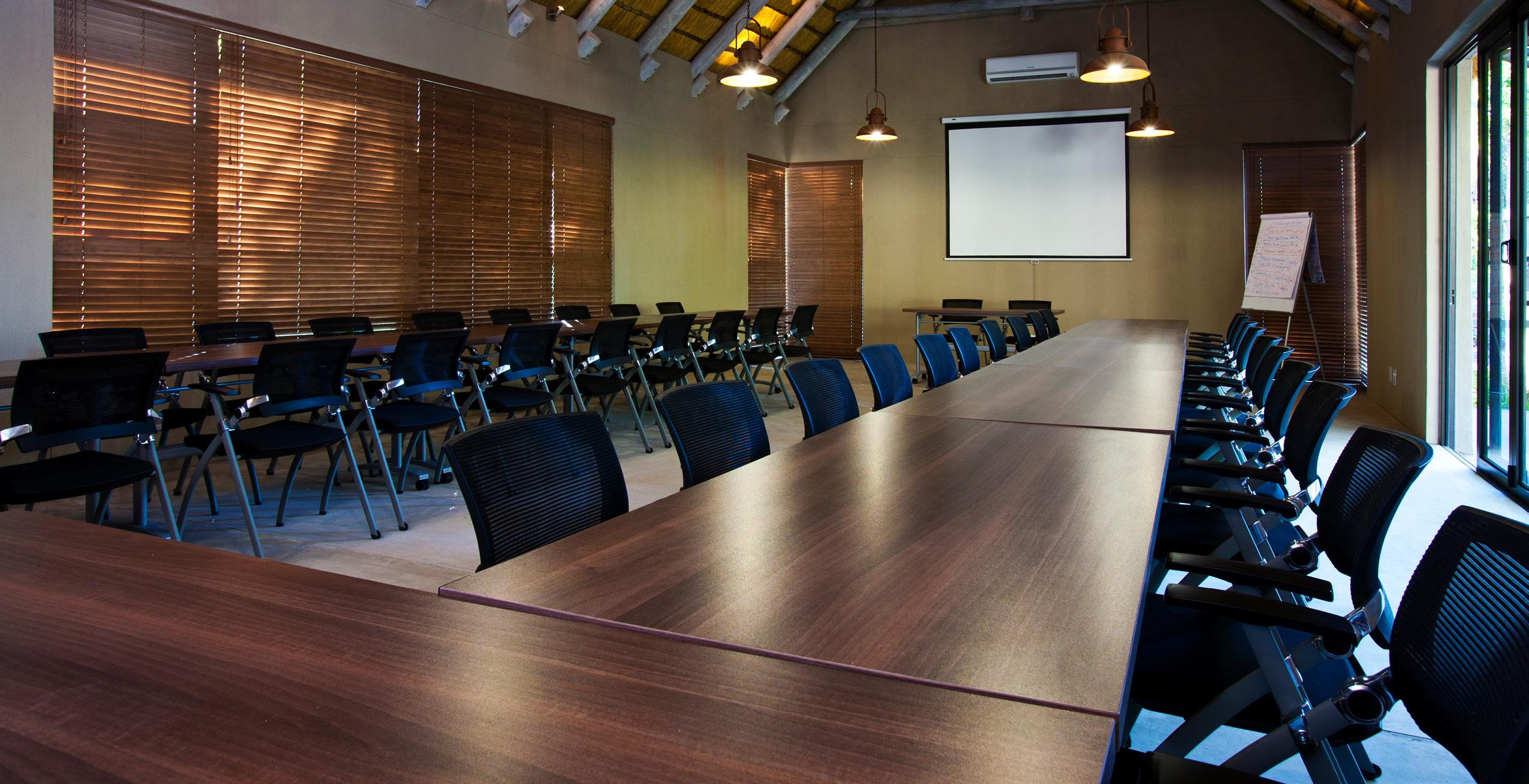

Discover unparalleled conference facilities amidst breathtaking natural landscapes with Namibia Wildlife Resorts. Host your next event at Popa Falls Resort, where the serene Okavango River meets nature’s tranquility. Gross Barmen Resort offers a rejuvenating retreat, blending wellness with state-of-the-art conference amenities. At Khorixas Camp, immerse yourself in the rich history of ancient civilizations while enjoying modern conference conveniences. Lastly, Hardap Resort presents a lakeside haven, perfect for inspiring creativity and fostering collaboration. Elevate your conference experience with us!



The Collected Regrets of Clover by Mikki Brammer
Clover Brooks is a death doula in New York City who has spent her life helping others achieve a peaceful passing. From her early encounter with death in kindergarten to her commitment to her profession following the loss of her grandfather, Clover finds herself more attuned to the dying than the living. Her dedication leaves little room for her own life until an elderly woman's final request propels her on a transformative road trip. Through this journey, Clover uncovers a forgotten love story and is confronted with the challenge of seeking her own happiness. Blending elements of romance, friendship, and self-discovery, Brammer’s novel is both probing and hopeful, turning the oftentaboo topic of death into a celebration of life.
Goodreads score: 4.18/5

Yasi Salek, a music madwoman fascinated by cult bands and their fandoms, hosts this podcast. Every episode welcomes a guest speaker, varying from music journalists to artists themselves, who make the case for a great band or iconic musician. Salek and the similarly music-obsessed guests unpack the makings of cult bands like The Pixies, Blondie and Talking Heads, including a curated playlist to help listeners understand the hype. A Bandsplain episode can be anywhere from one to five hours long, depending on how much the guests and Salek have to discuss. The listening experience is like sitting in on a conversation between two hipsters, endlessly ranting and raving about bands while listening to their music.
Our favourite episode: The National with Jeremy Bolm

LaRoy, Texas
Released in April this year to roaring reviews, this neo-noir film is said to be a treat for fans of crime thrillers. Ray, a small-town hardware store owner’s life spirals out of control after discovering his wife Stacy-Lynn's infidelity. When Ray is mistaken for a hitman, he inadvertently becomes embroiled in a deadly plot involving a local lawyer's murder. As Ray stumbles through this dark and twisted journey, he confronts betrayal, violence, and the grim realities of his own life. Themes of desperation, betrayal, and the search for redemption are intricately woven into this gripping narrative, making LaRoy, Texas an exploration of human nature and moral ambiguity.
Tomatometer: 100%
Our monthly round-up of good books, podcasts, channels, movies and series.

The Anxious Generation by Jonathan Haidt
Social psychologist Jonathan Haidt examines the alarming rise in adolescent mental health issues that began in the early 2010s. Haidt traces this epidemic to the decline of a “play-based childhood” and the rise of a “phone-based childhood,” which has fundamentally disrupted children’s social and neurological development. Through meticulous analysis, he reveals how factors such as sleep deprivation, social media addiction, and perfectionism have particularly impacted girls, while boys retreat into virtual worlds with dire consequences. Beyond diagnosing the problem, Haidt offers a compelling call to action, outlining steps that parents, educators, tech companies, and governments can take to combat this crisis.
Goodreads score: 4.51/5

This easy-to-listen podcast hosted by Amanda Montell and Isa Medina discusses movements from the cultural zeitgeist that perform like cults. Through episodes like The Stanley Cup , Burning Man and Chiropractors , Montell and Medina (who no longer co-hosts the podcast’s new episodes) critically consider why so many people jump onto these bandwagons and form communities united by a shared obsession. Drawing similarities between real cults (think drinking kool-aid) and the current cultural moment, Sounds Like a Cult is a fun investigation into how capitalism, social media and a yearning to belong influences human nature.
Our favourite episode: The Cult of Fast Fashion

Running since 2015, Taskmaster is a British comedy panel game show currently in its 17th series. Hosted by comedians Greg Davies and Alex Horne, each season welcomes five other guest comedians who compete in weird, wonderful and sometimes mind-boggling “Tasks.” Some tasks require critical thinking and are scored by time, others require creativity and are scored by comedic relief. Each season is unique, as the guest comedians bring their distinct personalities and comedic style to the show. The winner of an episode walks away with the other contestants’ unwanted items and the overall season winner gets a gold-plated statue of Greg Davies, the Taskmaster’s head.






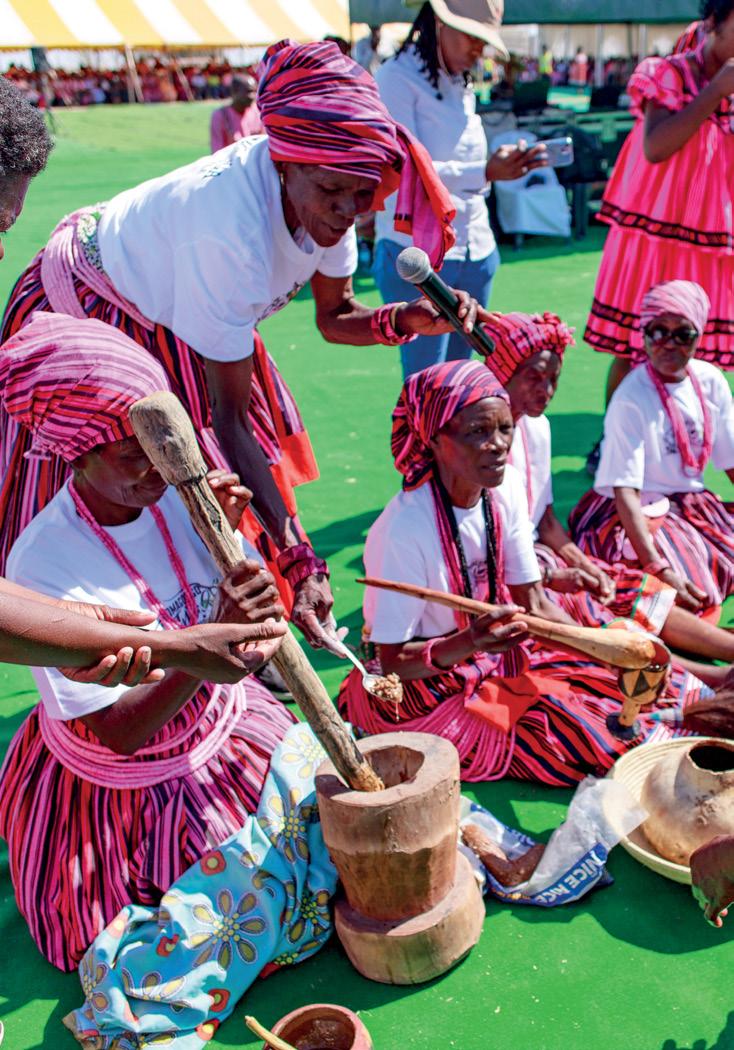



The Onambango Palace of Tate Omukwaniilwa Fillemon Shuumbwa Nangolo, the leader of the Aandonga community, was transformed into a colourful spectacle by thousands of people who attended this year’s Omagongo Festival. It was a truly vibrant event with the women dressed in their traditional ondelela dresses and men wearing their etenga shirts.
Omagongo, a name meaning “water of the marula”, is a refreshing alcoholic drink with a pleasant sweet-to-sour taste. The alcohol content depends on how long the juice has been left to ferment and averages between 4% and 4.5%. But the alcohol content of potent brews could be as high as 8%.
Trees are owned by the families on whose fields they grow, but it is the responsibility of the women to tend to the trees and omagongo is brewed by households who have these marula trees on their fields. According to tradition, the first brew was presented to the king, queen or chief. It is also served to visitors and friends, as well as at weddings and special occasions.
The marula season stretches from late January to April/May when the trees bear fruits, which are still green when they fall off the trees. Once they have ripened, after about two to four days, they are collected and sorted according to how ripe they are by groups of women and girls. As the fruit of each tree has a distinctive flavour, the fruits are usually not mixed, except during years when the harvest is poor.
Neighbours are invited to help with the extraction of the juice, a social event which is referred to as the “Women’s Parliament”. Traditional songs are sung, poems are recited and jokes are told while the women are extracting the juice. It is also a time for the women to catch up with the latest gossip and an important occasion for the women to pass on their knowledge and skills to the young girls.
The leathery skin is pierced with the sharp edge of a cow’s horn to separate the juicy white flesh from the kernel and is

squeezed by hand into a clay pot covered with a cloth. It is then stored in a cool, dry place to ferment for between one and seven days, depending on the required alcohol content. It is a time-consuming chore which is increasingly being replaced by mechanical presses today.
As people’s judgement could be impaired when they are under the influence of the popular drink, the carrying of any type of weapon is prohibited during the marula season. Sittings of community courts are also suspended during this time.
The Omagongo Festival is about much more than simply enjoying omagongo. It is a time of sharing what nature has provided and it brings people together. It also reinforces the subsistence and economic value of the marula tree, as well as the diverse cultures and history of the eight Aawambo



The Omagongo Festival is about much more than simply enjoying omagongo. It is a time of sharing what nature has provided and it brings people together.

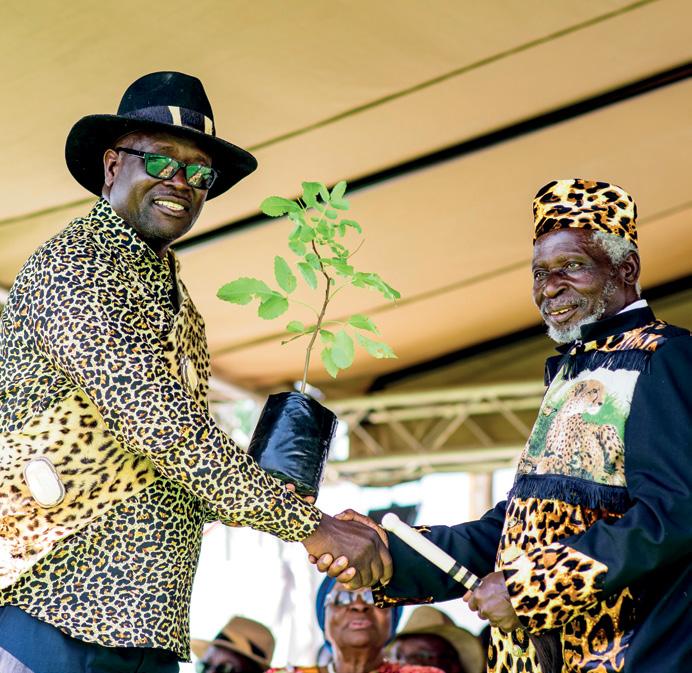


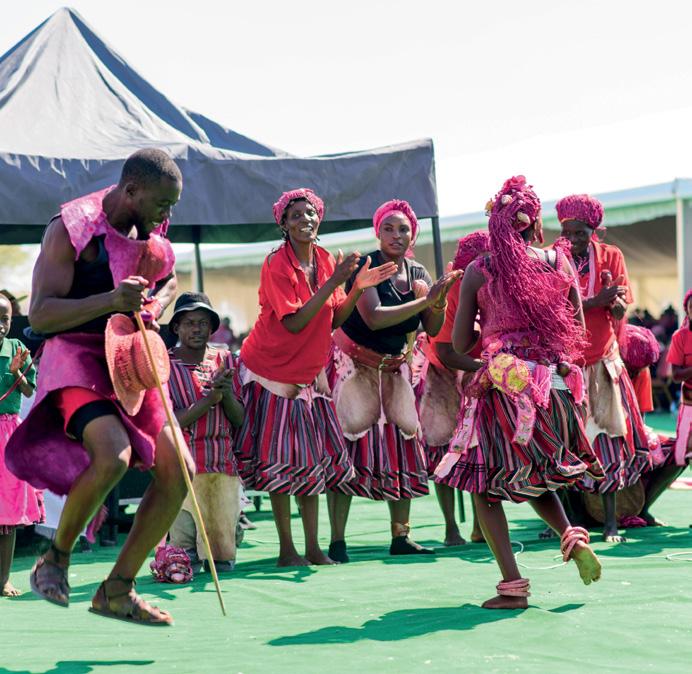
communities. It is also a demonstration of inclusiveness as everyone is welcome to attend the festival.
Omagongo ceremonies were initially celebrated separately by the eight Aawambo communities. Following the inscription of the Oshituthi shomagongo (marula fruit festival) in the UNESCO Representative List of the Intangible Cultural Heritage of Humanity in 2015 in recognition of the important role omagongo plays in the culture and socialisation of the Aawambo, the first combined ceremony was held in Ondonga in 2016. It has since been rotated annually among the eight Aawambo communities.
The main event is usually preceded by Oshungi (storytelling) on the Friday. The programme features the history of the Aawambo, cultural performances and dances as well as the reciting of poems, while stories are told around the fire in the evening.
This year’s festival was attended by President Nangolo Mbumba, Vice President Netumbo Nandi-Ndaitwah, Prime Minister Saara Kuugongelwa-Amadhila, leaders and representatives of various traditional authorities and a long list of other dignitaries. Speeches were interspersed with ululating and numerous cultural and dancing performances which kept the crowd entertained. Highlights on the day were a demonstration of how the omagongo is produced and the presentation of the omagongo by a long line of women, balancing the clay pots of omagongo they had produced on their heads.
The marula tree is not only valued for its omagongo. It is one of the most valued trees in Owambo with a multitude of other uses. It is the first tree to bear fruit after the mahangu has matured and the ripe fruit is eaten as a snack, or used to make jam or marula jelly. The fruit contains two-and-a-half times as much vitamin C as orange juice per 100 g and also contains citric acid, malic acid and sugar.
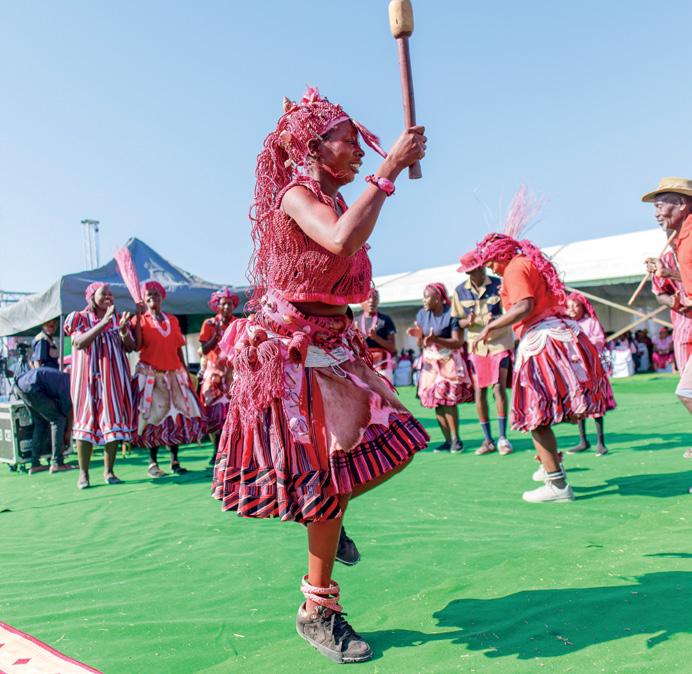
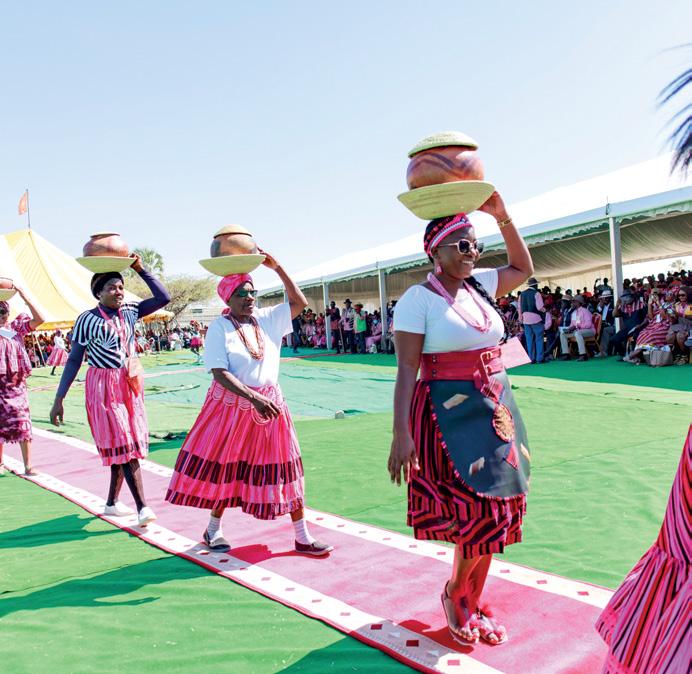
A refreshing non-alcoholic beverage, oshinwa, is made by adding water to the flesh and seed remaining after the juice has been squeezed and left to stand overnight. It is especially enjoyed by women and children.
The nuts squeezed out of the skins are dried in the sun and processed by women after the mahangu harvest. The nuts are pried open and two or three kernels are extracted with a needle or flattened nail. The kernels, which have a nutty taste and a protein content of about 28%, serve as an important food supplement. The kernels can be eaten raw as a snack or roasted lightly before it is consumed.
Marula oil is produced from the kernels which have an oil content of close to 46%. The kernels are pounded with a pestle in a wooden mortar to extract the highly prized oil, which is used for cooking or enjoyed with porridge and as a condiment with various other dishes. The oil is also used for a variety of cosmetic products, ranging from face and body creams, soap and lip balm to hair and nail products.
Nothing of the marula tree is wasted. The seed cake left in the mortar is removed and used as a food additive or eaten as a snack. The skins are used as a supplement for livestock or dried for later use as fodder. It is also ploughed into the fields as a fertiliser.
With the 2024 Omagongo Festival something of the past now, life in Owambo has returned to normal – until the start of the next season. Next year’s Omagongo Festival will be hosted by the Oukwanyama and Ombadja traditional authorities.
Olivier

Tourism in Namibia has traditionally exhibited a distinct cyclicality, with the peak season running from July to October. This pattern seems to be waning with a higher than usual number of visitors gracing Namibia during this latest January to April period. Below we explore the changing landscape of tourism in Namibia in more depth.
The seasonal nature of tourism in Namibia can be attributed to various factors, primarily the European holiday season and high temperature variability with hot rainy seasons. However, recent figures paint a different picture, with 166,930 passengers arriving at Namibian airports between January and April – 17.9% higher than during the same period in 2023 and a new high-water mark for the period.
This rise in off-peak tourist visits beyond the previous traditional peak season has the potential to stabilise revenue streams for the hospitality sector going forward. Additionally, tourism has a high multiplier effect, bringing cash to the far corners of the country. With more tourists visiting all year round, there will be an increase in the consumption of goods and services, driving supply chains for wholesale goods, agriculture, artisanal products and other subsidiary sectors. Indeed, tourism’s contribution to the gross domestic product (GDP) reached N$14.3 billion in 2022, or 7% of the GDP, according to the Tourism Satellite Account of Namibia.
The winds of change are driven by the nascent energy sector (oil discoveries and green hydrogen) and increased awareness of Namibia’s tourist attractions, amplified through social media. Social media platforms act as a beacon, drawing a diverse array of tourists, including solo adventurers and those seeking bespoke tours, as noted by Gitta Paetzold, CEO of the Hospitality Association of Namibia (HAN). The off-peak season offers a sense of calm, appealing to the solo traveller seeking authentic, serene experiences away from the crowds.
The rise in self-drive tourism, especially among those renting fully equipped camping vehicles, highlights the growth in independent, flexible travel. This can be seen by the increasing number of rental companies in Namibia. To further emphasise the preference towards flexibility, tourists are gravitating towards non-traditional accommodation like Airbnb, which escapes traditional tourism statistics.
Business travel, spurred by Namibia’s growing energy sector, has also fuelled off-peak tourism. Conferences and business trips often transform into extended leisure stays, and business travellers enchanted by Namibia’s beauty often bring their families back for vacations. In countries such as Angola, the business community significantly contributes to tourism spending, and we expect Namibia’s energy sector to positively impact tourism as well. Forthcoming conferences in the airline, tourism and energy sectors are poised to further elevate Namibia’s profile.
According to the European Travel Commission, 75% of surveyed Europeans plan to travel between May and October 2024, a 3% increase from last year. Of these, 11% intend to travel solo, 38% with a partner, 34% with family and 12% with friends. European tourists made up 54.8% of Namibia’s visitors this year and have consistently comprised around 42% of the total tourist pool since 2016.
However, capturing the full impact of these new trends poses a challenge. Non-traditional accommodation and independent travel often slip through the cracks of traditional data collection. According to Paetzold, the additional stream of business and revenue flows into Namibia is assumed to be through businesses that offer online booking platforms but are not captured in terms of official tourism revenue or tax declaration, yet with a significant impact and footprint on the Namibian environment and infrastructure. For example, Airbnb and other online accommodation offerings are popular among the self-drive community and much of this business is not reflected in the official statistics. Further, transport services like Yango and InDrive are not registered like formal shuttle operators, contributing to the gap in the statistics. This suggests that tourism’s impact on the economy is larger than official statistics indicate.
The shift towards year-round tourism signals substantial economic benefits and opportunities for sustainable growth, and positions Namibia to become a perennial destination. As the trends in tourism change, the notion of a peak season may one day be a relic of the past, replaced by a continuous flow of visitors boosting Namibia’s tourism sector all year round and increasing economic activity.
Angelique Bock Research Analyst


























IJG believes in tailoring their services to a client’s personal and business needs. For more information, visit www.ijg.net





You can trust that it’s going to be one magnificent party when The Ell's show up, djembe and acoustic guitar in tow, and a procession of friends, fans and followers shaking the duo’s hands as they make their way to the stage. Over the span of eight years, Artwell (Slickartie) Neusul and Emmanuel (Manny) Ndifon - who hail their stage name from the “el” at the end of both their names - have built a business on good vibes.
Covering music from a laundry list of genres, they are the kind of live music act that will have you jumping to your feet to sing along to favourites, yet also, as I encountered most recently, silently weeping at a cover of James Blunt’s You’re Beautiful. This dynamic nature is credited by a soulful, African music influenced Slickartie on the djembe, paired with a lively, indie influenced Manny on the guitar. They have dubbed the genre Frodie, short for Afro-Indie. Dynamite does indeed come in small packages, as this two-man-band proves time and time again.
It’s taken them the better half of a decade to release original music on streaming platforms. Not that The Ell's haven’t been writing, testing and tuning their original sound at live gigs up to this point. Habitual audiences of their live music shows know all the words to the handful of their own music, and other local bands have begun covering their songs. Then on a fateful Wednesday evening in June 2024, The Ell's held a listening party for their very first EP titled KAPITAL Ells With the release of these five songs, along with a few single releases prior, they are geared up for the next phase of their music careers; touring and playing original sounds deeply inspired by life, love and legacy in Namibia. KAPITAL Ells, which


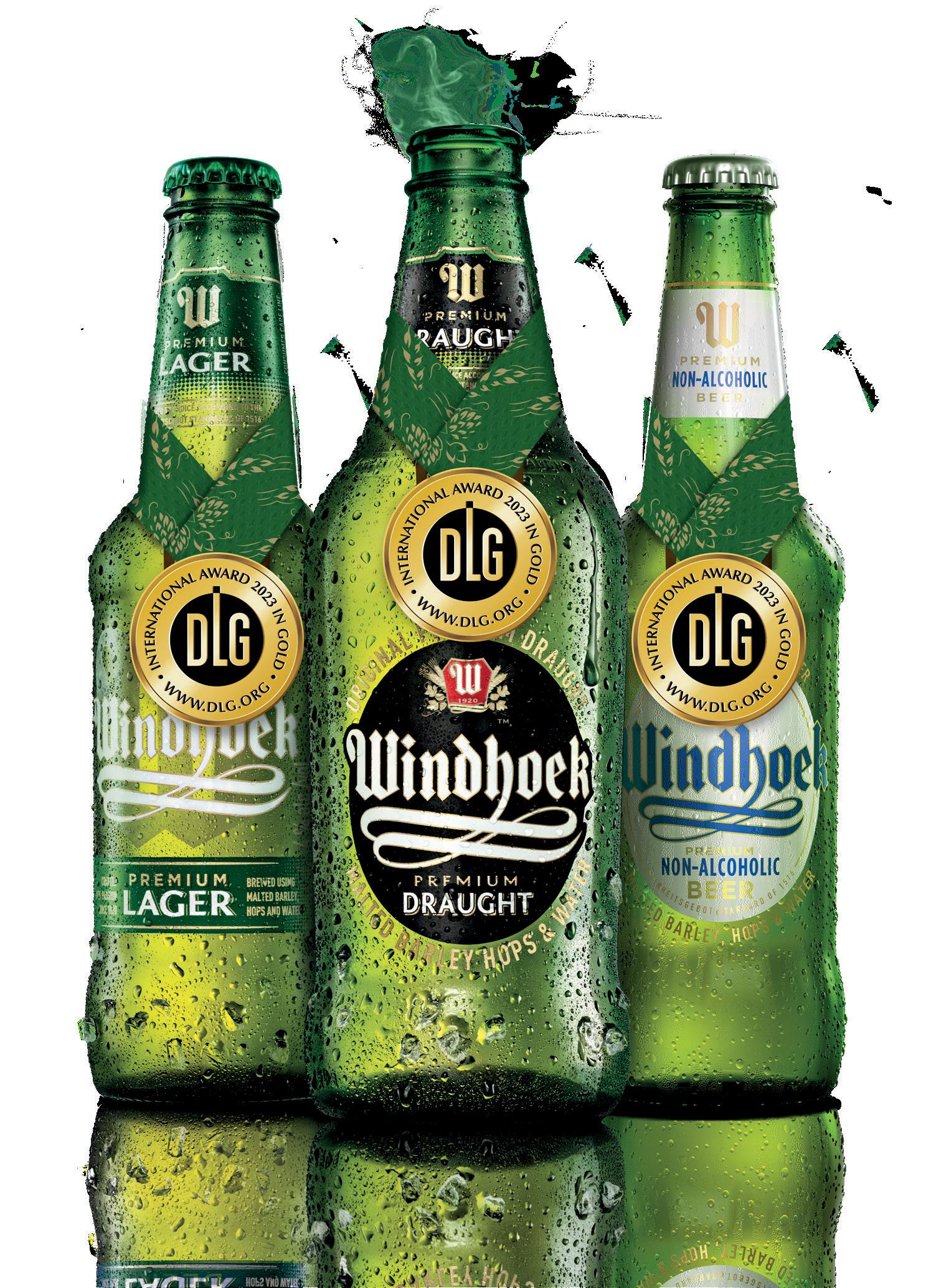
is available on music streaming platforms, is equal parts groovy, easy listening and up-beat tunes destined to breed a catchy earworm. Slickartie’s soulful and raspy voice blends beautifully with Manny’s melancholic, ballad sound. While the songs on this EP are a slight departure from their usual two instrument live sets, filled with more robust musical elements, their unique sound shines through in every tune.
Our collective live music scene has taken its fine time to grow to this point in time, where local artists like The Ell's can be fully booked weeks in advance. Namibian musicians, more often than not, play gigs as a side hustle. Slickartie and Manny have managed to make The Ell's their bread and butter, however long it took to get to the point where their other undertakings are the side hustles.
The duo credits their very Namibian way of marketing for this stage of their recognition. Word of mouth has been the primary way of getting their name out there. But it’s not just the all encompassing “The Ell's are playing” when you’re discussing plans with friends, that contributes to their success. It is, in great part, also due to their approachable personalities and that no two Ell's sets are the same. While they are the first port of call for any restaurant or event planning to host live music, Slickartie and Manny remain humble, friendly, funny and professional. And after their long tenure in the small yet growing industry, where you would expect the novelty of their performances to wear off, The Ell's constantly bring fresh sound to every set.

They are the kind of live music act that will have you jumping to your feet to sing along to favourites.
There is a unique strain of genius to their crowd pleasing abilities. “We might be playing background music at a restaurant, and I see a few people tapping their feet under the table, or older gentleman peeling away from conversation to give us a double thumbs-up” says Slickartie, who reads the room with a fine tuned eye, while simultaneously smacking the djembe. Constantly vibe checking the audience is one piece of the puzzle. Then Slickartie and Manny speak only through sixth sense, and the other one knows what's up. The Ell's will then switch up the pace to accommodate the crowd, and play a cover that, even after seeing them live about a dozen times, you haven’t heard before. It’s this nature that has event planners calling them back, time and time again. You simply cannot grow tired of them.
In October this year The Ell's are taking to the road on a two week tour through Botswana, Zimbabwe and Zambia as they make their way to their first big-time festival gig on Lake Malawi. “Are we just big fish in a small pond, or is this the truth, that we can expand internationally?” says Manny of the journey to the UMP Festival. The time has come for The Ell's to venture beyond the borders of Namibia, where they are a household name, to explore the possibility of their music resonating with a wider audience. Sharing their sound with a

completely different crowd has the undeniable potential to open many more doors, not just for The Ell's, but Namibian acoustic and indie music as a whole.
With unwavering support from our nation, The Ell's are currently in the top 20 for the esteemed KORA Awards. Hoping to claim the “Best Traditional Music” title, Slickartie jokingly says “we would want to put the award in town square or some public space, for everyone to witness it” not as a show-off, but because winning such a respected award would be thanks to the Namibian people. The long list of fans and followers that back this charismatic band do so because they truly deserve every applause. Not only would this win be major for The Ell's as artists, but it certainly paves the way for other bands from the land of the brave, proving to the world what we already knowthat Namibian musicians are the ones to watch.
Charene
Labuschagne


Medical Rescue Africa (MRA) is Namibia’s leading fixed wing Aeromedical Evacuation company specialising in the evacuation of critically ill and injured patients across Africa, 24 hours a day, 7 days a week.
MRA, through Westair Aviation, has a dedicated fleet of Air Ambulance aircraft on standby which have the ability to land on unimproved airstrips as well as to operate at night and in bad weather conditions. Air crews undergo regular refresher training, and all operations comply with the highest safety and quality standards.
MRA has its own 24-hour Call Centre with trained and dedicated operators utilising state of the art equipment and aviation information technology. The Call Centre liaises with local and international Medical Aid, insurance and medical assistance companies to help facilitate and coordinate medical evacuations, and medical repatriation services.
To ensure the best possible pre-hospital treatment to patients, MRA offers a 24-hour Road Ambulance at Eros Airport for transporting patients from the Airport to the treating Hospital. The MRA Ambulance is equipped to an ICU patient care level. MRA has a standard service-level agreement with all accredited ALS Ambulance Services across Namibia for effective Road Ambulance evacuation services should the requirement be to not activate the fixed wing Air Ambulance.
MRA is led by a management team with extensive experience in medical response, evacuation and support operations.
Tel: 912 within Namibia or +264 83 339 0033
David Bishop, former news editor, reflects on the necessity of luxurious vehicles for those in lofty positions
In last month’s column I wrote about respect and how willing we seem to freely dish it out. Core to that idea, and something I did not manage to touch on, are the “trappings of power” afforded to those we have elevated; trappings they may not actually deserve or which they should perhaps not be entitled to. How fitting then that only a day or two after I had submitted that column, I was passed on the road by a brand-new Land Rover Defender 110 with Southern African Customs Union (SACU) number plates.
I’ll pause here to quickly point out that according to cars.co.za the new Land Rover Defender 110 costs anywhere between 1.8 and 3 million Namibian dollars. The local dealer does not even list their prices, instead asking you to get in touch for a quote.
SACU, which was formed in 1910, lists various objectives on their website, including “facilitating the cross-border movement of goods between the territories of the member states”, “promoting conditions of fair competition”, “facilitating the equitable sharing of revenue arising from customs, excise and additional duties” and “enhancing the economic development, diversification, industrialisation and competitiveness of member states”. I suppose it could be argued that the purchase of a multi-million-dollar vehicle boosted Namibia’s economy, or at least the balance sheet of Bidvest Namibia, which owns Novel Land Rover.
The reason for vehicles with SACU plates driving around Namibia is because the SACU Secretariat is based in Windhoek – you can see their building on your left when driving up Julius K. Nyerere Street towards Robert Mugabe Avenue. The Secretariat is responsible for the day-to-day administration of SACU and is funded from the shared revenue pool – money that would otherwise be shared among the member states according to the agreedupon shared revenue formula. I am not suggesting that the Secretariat is unnecessary, but with a significant percentage of our national budget made up of receipts from this fund, it is worth asking whether those employed by the Secretariat really need to drive new Land Rover Defenders to carry out their functions.
I am singling out the SACU Secretariat because of the car that I saw, but of course it is not just them; our ministers, deputy ministers, executive directors, etc. all drive
expensive cars, and while the local dealerships are surely happy about it, we need to ask if they really need them.
There are some examples of people in power seeming to shun the excesses that so often come with it, such as former Dutch prime minister, Mark Rutte, who famously cycled to and from work rather than travel in a cavalcade, or perhaps most famously of all, José Mujica, who was dubbed “The World’s Poorest President” due to his super austere lifestyle which included driving his old 1987 Volkswagen Beetle, refusing to move from his wife’s farm to the luxurious house provided for the president, and donating about 90 percent of his salary to charity. They both seem to have been able to do their jobs well enough!
The Kenyan government under then President Mwai Kibaki also tried to do away with the large luxury vehicles driven by government officials, ordering that all official vehicles must have an engine capacity of less than 1800cc, while all vehicles with larger engines that were in use at the time were to be handed back to be sold. In this case it was, admittedly, more to do with the government wanting to save money on their fuel bill than humility. But while it was reported at the time that President Kibaki declined eight vehicles bought for his office without his authority, the policy did not seem to last very long. According to a friend of mine who lives in Kenya, the Kenyan government officials can be seen today driven around in the newest Lexus 4x4 SUVs.
“So what?” some of you may be thinking, “CEOs and MDs also drive big expensive cars that the companies they work for often buy for them.” True, but in that case, it is up to the shareholders to decide if they want to kick up a fuss about the allocation of resources. In the case of government, SACU, or any other taxpayer-funded entities, we should surely have a say, and we should be asking if the person driving that expensive vehicle really needs it to carry out their function, and whether 1.8 to 3 million Namibian dollars could not be better spent than on a depreciating asset.
Until next month, enjoy your journey.
David
Bishop


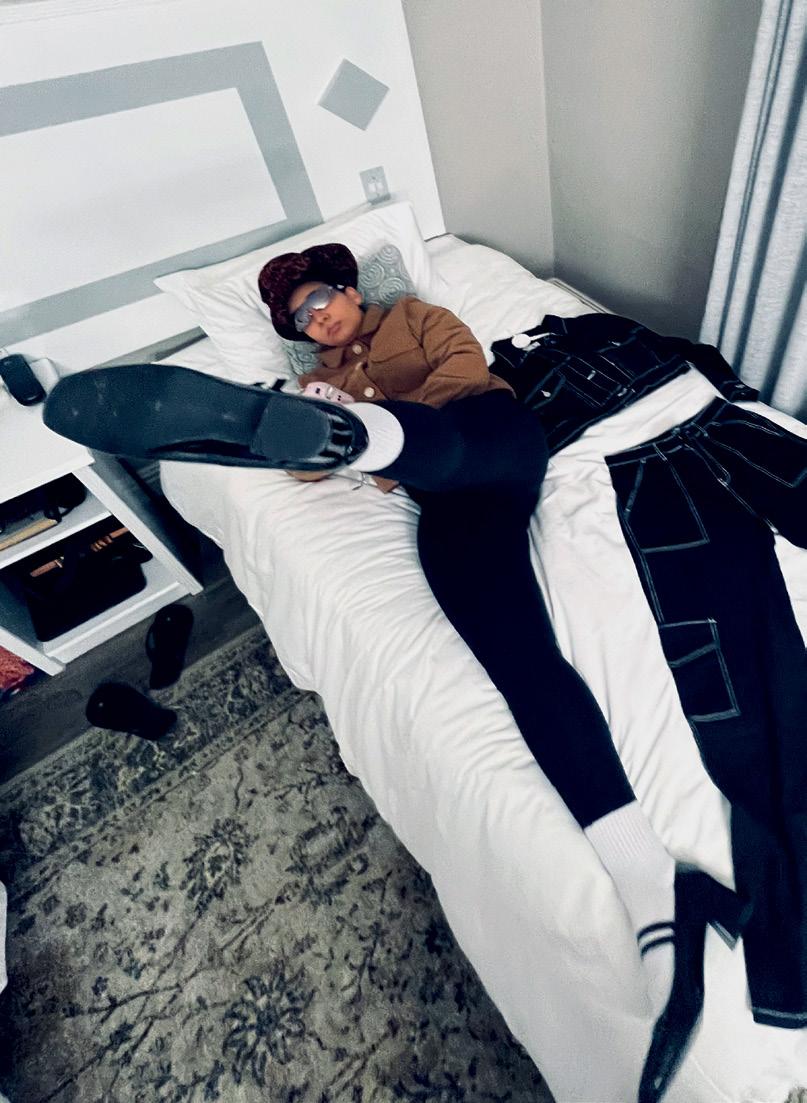

Amulti-award-winning singer, songwriter, poet, actress and all-round superstar, Khadijah Mouton is arguably one of Namibia’s best-dressed personalities. Whether rocking a corporate look at her 8-5 or hitting the stage to perform one of her popular tracks, this style star always makes a statement, seamlessly switching from corporate girl mode to weekend stage bombshell.
I caught up with her to talk about all things fashion and creative freedom in an age where trends and fast fads dominate.
What initially drew you to the world of fashion, and how has your personal style evolved over the years?
The funny thing is, even as a child, I was always particular about what I wore. I chose my outfits and loved dressing. I loved the creative process of dressing myself up and saw dressing up as a form of creative expression. I have always been more of a tomboy, and while my style has evolved, it has also stayed the same.
As someone known for setting style standards rather than following trends, what inspires your creative process when putting together an outfit?
My choice of outfit depends on my state of mind. When it comes to events and themes, I like to dress as my interpretation of whatever theme I get. I always want to feel comfortable, especially with shoes. I have had to wear many pairs of very uncomfortable shoes for the sake of the outfit. I also really love wearing matching sets of clothing. I love a top-andbottom match. I feel it just looks so complete and well put together.
As a guest judge at Windhoek Fashion Week Pitch Night, what do you believe sets apart a truly exceptional piece of fashion or a talented designer?
I always enjoy judging Pitch Night, but sometimes I feel like I’m not the person for it, although I am humbled to be part of the process. What sets a design apart for me is anything out of the ordinary; pieces that cannot be worn every day are the ones that stand out for me. Through this platform and just from observing Namibian designers, there is so much creativity; so many ideas I could never come up with. I’m more of a curator than a judge.
You wear many hats as a musician, actress, copywriter and all-round creative. How do you balance these diverse roles, especially while working a 8-5 job and being a mother?
Funny you should ask that because I love hats. I am a hat connoisseur and have an amazing collection of hats. So I do wear many hats, literally and figuratively. And to be honest, I don’t balance much, I just do what feels right. I know it may come off like I’m doing too
much and have no direction, but I want to live a full life and try everything I want to. I’m a curious person and I want to experience as much as possible.
How does your daily outfit adapt to these roles? Give us one example.
An 8-5 takes a lot of your time, but I’ve found so much purpose in what I do. I enjoy adopting my outfit to whatever the day calls for. If you tell me I’m going to a golf course for the day, I’ll find a way to wear something that fits the occasion, with my own twist. When I’m in my corporate girl mode, I show up as a corporate hun. People at work even joke about how I incorporate hip-hop elements in my corporate outfits. Honestly, I don’t look amazing every day, but I enjoy creating this “corporate girl” character that has me playing the role of the stylist. I feel like clothes help me to say things that I’m sometimes too scared to say.
What challenges do you face as a multifaceted creative, and how have you overcome them?
The challenges I face are the comments of people. Many people question my authenticity because I dabble in many things. People ask, “Are you a singer, an actress or a DJ?” Those things do get to my head, and I ask myself if I should maybe find one thing and stick to it. But I overcome these doubts by constantly telling myself that this is my life and it’s the only one I have. At the end of it, I want to say that I lived it to the fullest.
Many admire your ability to seamlessly transition between different creative mediums. Is there anything that you have not tried yet?
I have always dreamed about being a creative director, not necessarily a designer, but who knows? I know that I have a good eye and I have the ability to put things together, so if the opportunity presents itself for me to creatively direct in the fashion space, I’ll 100% take it up. I don’t know if I’ll be good at it, but I’m willing to take the risk. I have had thoughts of starting a designer brand of my own and hope to get the opportunity to do it one day.
As someone who prioritises individuality and selfexpression in fashion, what advice would you give to aspiring creatives who are trying to find their own unique style and voice?
Be yourself. Swag comes from the inside; you can’t put it on. It’s great to draw inspiration from other people, but always remember that what looks good on someone else won’t necessarily look good on you. Never be afraid of being a little different and to embrace your quirks. Do what feels right.
Follow Khadijah’s style journey on Instagram @khadijah_adventuretime.
Rukee Kaakunga

Since its inception in 2005, Nampharm Foundation has been a beacon of hope for Namibian children in need. A pivotal shift saw the focus of this foundation firmly planted on addressing the critical need to provide facial reconstructive surgery for Namibian children born with cleft lips and palates.
Founded with a specific focus on providing medical treatment for children in need, Nampharm Foundation is driven by a deep sense of social responsibility and compassion. Through strategic partnerships, fundraising efforts and community outreach programmes, they have
been able to expand their reach and impact, touching the lives of countless families across Namibia.
NAMPHARM FOUNDATION DIFFERENCE
Carol Musarurwa and Cari-Ane van der Walt are responsible for the day-to-day operations at Nampharm Foundation. Carol, a stalwart here for over 19 years, can recollect many stories of impact that underscore the significance of the foundation’s efforts. Visibly moved, she recounts instances where parents have reconciled with their children postsurgery, overcome by the positive transformation. “Some believe it’s a curse on the family, or some hide their children


from society because they don’t want to have to answer questions. But the moment the operation takes place, we see a change of heart,” she explains.
“It is very emotional for them. There is a sense of relief that their child can be integrated into society, that they are no different.” Carol’s eyes light up when she shares the story of young Daniel, who “was not yet a year old when he had his operation, and when he went back to his village, they could not recognise him. They even slaughtered a goat in celebration when he returned.”
Cleft lip and palate are congenital conditions that affect thousands of children worldwide, including many in Namibia. These conditions occur when the tissue that forms the lip and/or palate does not fully fuse during foetal development, resulting in a gap or opening. Beyond the physical appearance, children born with cleft lip and palate may face a myriad of challenges. Social stigma, emotional distress and behavioural difficulties are common experiences for children with facial differences. These challenges can impact their self-esteem, social interactions and overall quality of life.
What is more, children with cleft lip and palate often require multiple surgical procedures to correct the condition and restore normal function and appearance. These surgeries may be complex and require specialised care from skilled medical professionals.
The foundation’s mission goes beyond merely offering surgical interventions; it includes providing comprehensive care and unwavering support to children and their families throughout their transformative journey. From the moment a child is born until they reach the age of 18, Nampharm Foundation is there every step of the way, offering holistic support and guidance.
Talking about the selection process, Carol explains: “We never turn a child away. We get our referrals from all the state hospitals or state institutions. Everybody qualifies. Any child with a cleft lip and palate qualifies to go through

a procedure.” If the child is a newborn baby, they will wait until they weigh at least six kilograms before they can do the cleft lip operation, and at 18 months they can do the cleft palate operation.
The foundation’s support extends across Namibia, with arrangements made for transportation and accommodation for patients from remote areas. As Carol explains, “We have an agreement signed with the Ministry of Health to take care of all state patients.” Their commitment to the children’s recovery journey encompasses every aspect, ensuring optimal care and support until they can reintegrate into their communities. “If a child comes from outside Windhoek, such as from Rundu or Katima Mulilo, we organise transport. They then stay in the state hospital until the day of the operation which is performed at Rhino Park Hospital. We also arrange all the accommodation while they stay in Windhoek to get their follow-ups done before they can travel back home.”
At the helm of this noble cause stands Madame Penehupifo Pohamba, the former first lady of the Republic of Namibia, serving as the patron of the foundation. With a background as a nurse, midwife and mother, Madame Pohamba embodies empathy and leadership, advocating tirelessly for the health and wellbeing of children.
The impact of Nampharm Foundation’s work extends far beyond the operating room; it is measured in the smiles of children who have a newfound confidence and hope. With each successful surgery and every life touched, the foundation reaffirms its commitment to creating a brighter future for Namibian children, one smile at a time.
When asked how we can support them, Carol explains that they welcome financial support, but that awareness is also important. She adds, “July is Cleft Lip and Palate Awareness Month, and we have lots lined up to create awareness this month, including our awareness walk.” If you are unable to join this walk, you can find out more about how you can support the important work done by Nampharm Foundation via their website: www.nampharmfoundation.org.na
Kirsty Watermeyer
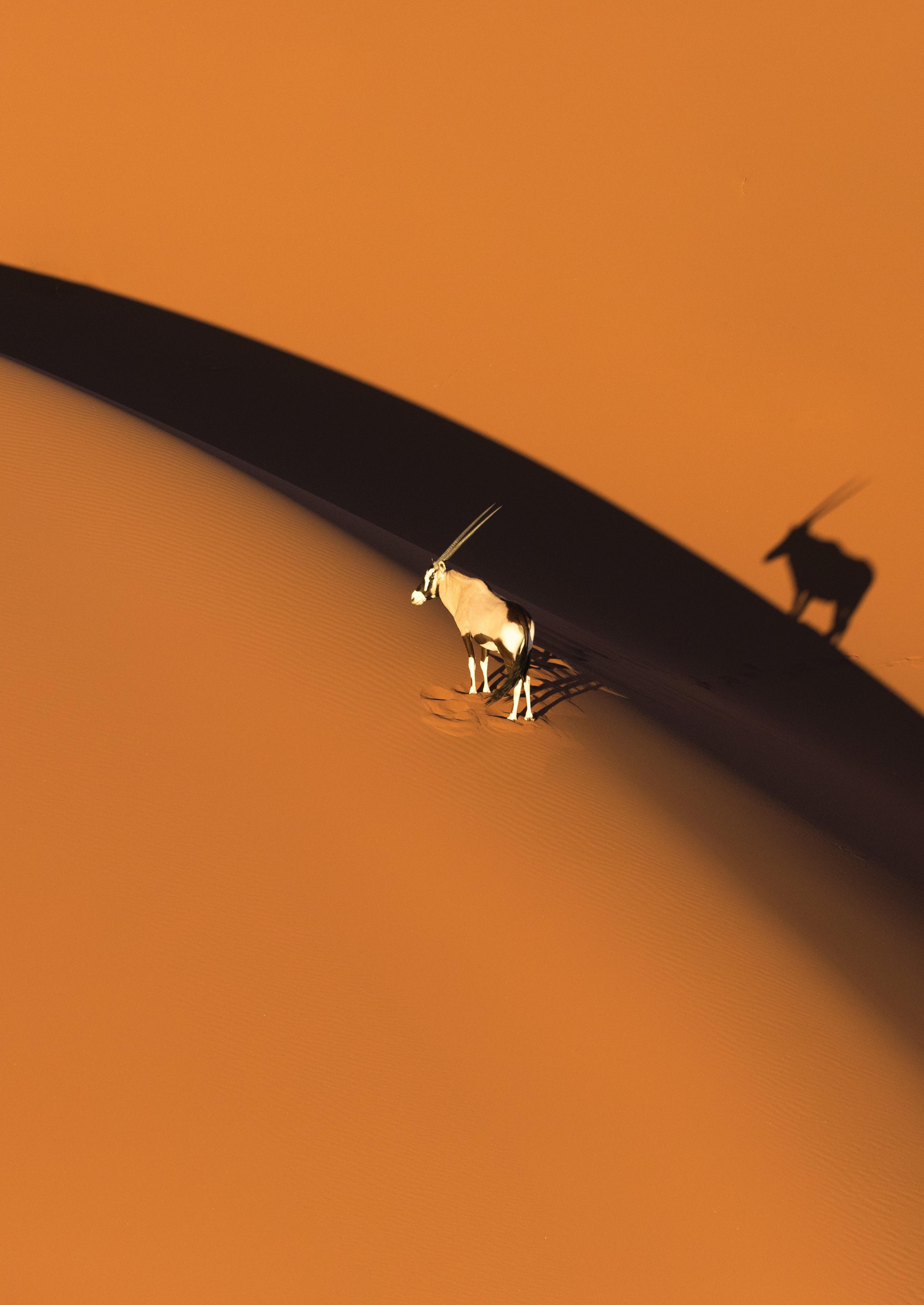

Proclaimed in 1979, the Namib-Naukluft Park is an amalgamation of several areas into one nature reserve. It is the largest conservation area in the country and home to one of Namibia’s top tourist attractions, the legendary Sossusvlei, a spectacular white pan surrounded by some of the highest sand dunes in the world.
Many visitors to Namibia say that no part of the desert is visually more dramatic than Sossusvlei with its monumentally high dunes. These gigantic star-shaped mountains of sand –one of the largest was measured from the base as 325 metres high – are a sought-after topic for artists and photographers. The warm tints of the sand contrast vividly with the dazzling white surfaces of the large deflationary clay pans at their bases. One of these, referred to as Dead Pan, is a large ghostly expanse of dried white clay, punctuated by skeletons of ancient camel-thorn trees, carbon-dated as being between 500 and 600 years old.
Sossusvlei’s mountainous dunes lie at the end of an erosional trough formed by the Tsauchab River. They are shaped by strong multi-directional winds, primarily the southwester, and have three to five sinuous crests, which meet at the highest point to give them their characteristic star shapes.
Visitors are allowed access to Sossusvlei only between sunrise and sunset. The first 60 km of the road from Sesriem to Sossusvlei has a permanent surface and is suitable for sedan cars, whereas the last five-kilometre stretch of sandy track is negotiable by 4x4 vehicles only. A shuttle service is available for people who do not want to hike the last 5 km.
SESRIEM
The permit office complex for entry to Sossusvlei and other destinations in this section of the park is at Sesriem. Four kilometres south from here is Sesriem Canyon, where the erosion of many centuries has incised a narrow gorge about 1 km in length. At the foot of the gorge, which plunges down 30–40 metres, are pools that become replenished after good rains. Sesriem derives its name from the time when early pioneers tied six lengths of rawhide thongs together to draw water from these pools.
To early inhabitants, the gorge was an important water source in an otherwise waterless area. Even during very dry times there is water in the upper reaches of the canyon, where the deep clefts reduce evaporation. The Tsauchab River flows through the Sesriem Canyon and continues down to Sossusvlei.
What originated as a dream to extend the frontiers of the Namib Desert by consolidating a large number of former sheep farms and rehabilitating the land into a sanctuary free of fences and other farm paraphernalia became the NamibRand Nature Reserve during the second half of the 1980s. Many facets of the Namib Desert are represented at NamibRand, creating a living tapestry of colour and contour that makes it a visual utopia for artists and photographers. Game species found on the reserve include gemsbok, giraffe, mountain and plains zebra, springbok, red hartebeest, bat-eared fox, spotted hyaena, Cape fox and African wildcat. In the more rocky areas, kudu, klipspringer, baboon and leopard can be found, while the dunes harbour a rich and diverse microfauna of lizards, beetles and spiders, and even the elusive golden mole. The reserve is also home to a rich variety of birds – over a hundred species have been recorded on NamibRand. The NamibRand Nature Reserve today comprises 15 former farms and extends over an area of some 202 000 hectares, making it one of the largest private nature reserves in Southern Africa, and it is also an International Dark Skies Reserve. Situated on the reserve are the Namib Desert Environmental Education Trust (NaDEET) Centre, and the NamibRand Desert Research & Awareness Centre.
Find more Namibian travel inspiration at www.thisisnamibia.com
Follow @thisis_namibia on Facebook and Instagram for extraordinary Namibia travel stories.

TO SOSSUSVLEI AND BEYOND

FlyNamibia Safari between Hosea Kutako International Airport and Sossusvlei, Swakopmund, Twyfelfontein, Etosha - Ongava, and Etosha - Mokuti.


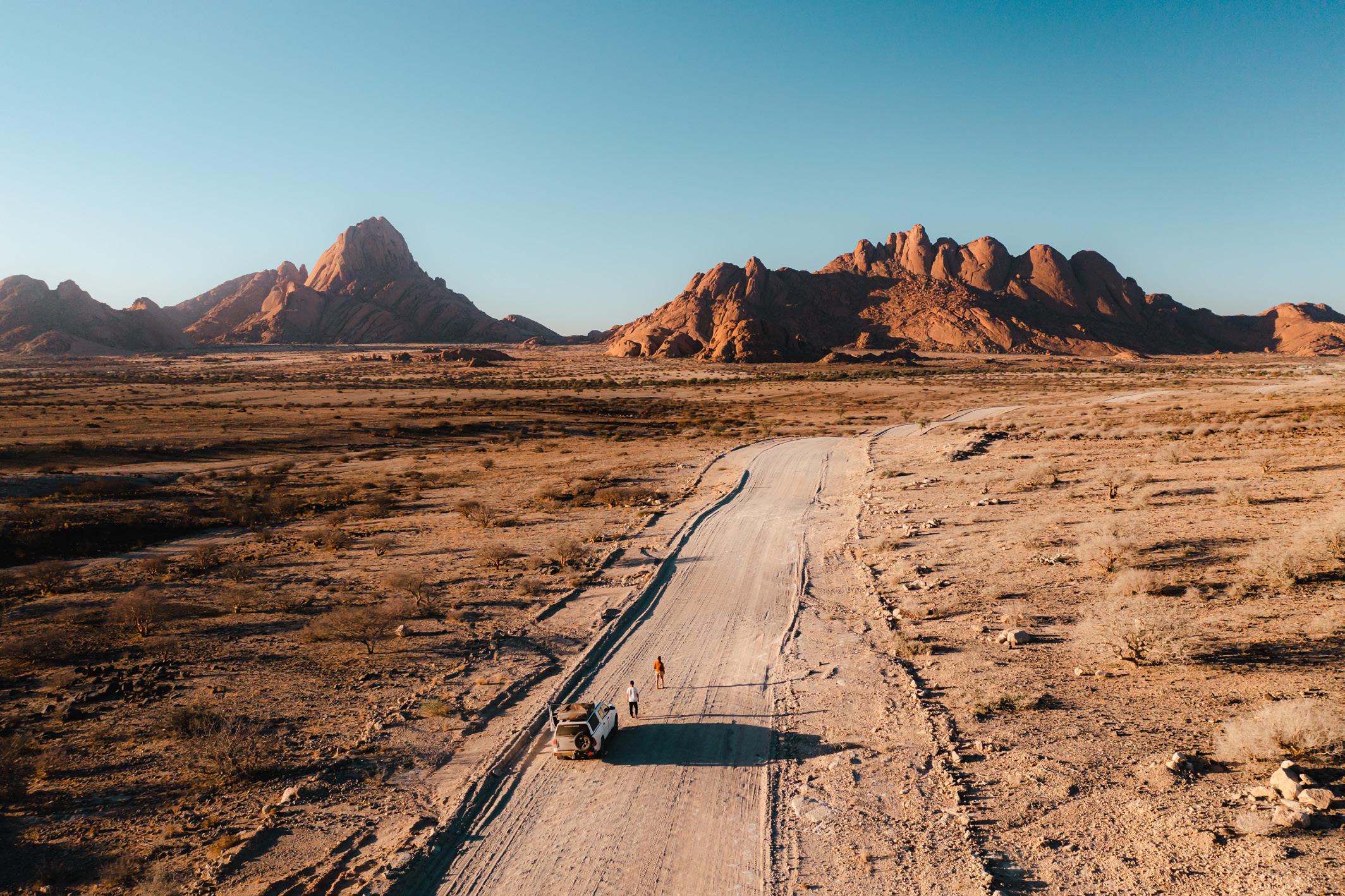


Many conceptions of stars existed among the ancient population. Early humans observed star clusters in the sky that resembled living organisms, and they conjured up tales to explain their observations. The earliest known records of astronomical observations began as soon as humans started to observe astronomical cycles, with some of the earliest evidence dating back to roughly 30,000 years ago. The majority of these records are drawings found on cave walls.
One of the most important functions of stars in ancient societies was navigation, especially for those sailing the vast oceans. They could locate themselves and plot their journey by looking at the positions and motions of constellations in the night sky. For example, the Polynesians of antiquity devised an advanced celestial navigation system that allowed them to make long-distance trips by using the stars’ orientation with respect to the horizon. This pattern did not escape the notice of the Egyptians either. They built enormous pyramids and temples, paying close attention to celestial alignments. An excellent illustration of this approach is the Great Pyramid of Giza, which was constructed to line up with Thuban, famously known as Polaris today, the North Star.
Moreover, for ancient communities to successfully produce crops, it was critical to anticipate seasonal changes. They recognised that stars exhibited patterns correlating with agricultural events such as planting and harvesting. By observing the positions and movements of the stars, farmers could forecast approaching seasons and organise their agricultural activities accordingly. For example, the appearance of specific constellations in the night sky was interpreted as signalling the onset of drought or the arrival of rainfall, enabling farmers to adjust their crop management and irrigation strategies.
While ancient societies looked to the sky for guidance, a deeper meaning is added to its significance when one considers how stars are born. Large regions of gas and dust called nebulae are where stars are born. The birth of a protostar is the result of the progressive collapse of nebular material within these cosmic nurseries, caused by the unstoppable force of gravity. The protostar is composed of a spiralling disc of matter encircling a dense, extremely hot core. As the protostar
gradually acquires mass through accretion processes, the extreme temperatures and pressures at its core eventually approach critical values, signalling the start of nuclear fusion. With its luminous energy, this momentous event heralds the definitive birth of a real star, sustaining the cosmic cycle of stellar evolution and lighting up the universe.
Scientists classify stars into different categories based on a wide range of characteristics that they exhibit, such as diameters, temperatures and luminosities. The spectral classification system is one of the main techniques used for classification and depends on elements like surface temperature and spectral characteristics. From the bluehued, searing O-type stars to the reddish-hued, relatively cooler M-type stars, this system has a wide range of stars. A unique set of characteristics and behaviours are covered by each classification, providing important information about the origins and evolution of these celestial bodies.
Every star, regardless of its mass, follows a trajectory that ultimately leads to the depletion of its nuclear fuel and the conclusion of its lifecycle. The course of a star’s lifespan is determined by its mass, which influences the order in which certain events occur. Low-mass stars, like our sun, go through multiple distinct phases. They start off as mainsequence stars, go through the red giant phase when they run out of nuclear fuel, and finally produce a planetary nebula and a dense remnant called a white dwarf. On the other hand, the trajectory of high-mass stars is more turbulent due to intensive nuclear fusion events that result in fast evolution. A supernova explosion, a catastrophic event that can momentarily outshine entire galaxies and leave behind fascinating aftereffects like neutron stars or black holes, brings this voyage to the finish. Black holes are places where the force of gravity is so strong that even light cannot escape it.
Stars are active creatures that shape the universe’s fabric, not just far-off specks of light in the night sky. Astronomers can solve the puzzles of the universe, from the genesis of elements to the development of galaxies, by examining stars. Next time we look up at them, let’s not forget that every star in the vastness of space tells a different tale of creation, existence and metamorphosis.
Victoria Nakafingo




In the Namibian diamond mining town of Oranjemund, a unique and somewhat surreal existence unfolds. Oranjemund is a place where time seems suspended. From the arid desert landscape to the vast expanse of the ocean, the surroundings serve as a constant reminder of the power and fragility of the natural world.
From this remote and isolated town, escapism emerges as a prevailing theme. Central to the town’s identity is the distinctive attire worn by the miners – balaclavas, serving as both a practical necessity for their diamond mining endeavours and a symbol of anonymity within a transient community. These balaclavas reflect the utilitarian ethos that permeates life in Oranjemund, where material abundance is scarce, and only a handful of establishments cater to the basic needs of its inhabitants.
Through the OMDis Residency, a month-long annual residency for visual artists based in the SADC, Ericke Tjiueza, a photographer, filmmaker and visual artist from Namibia, explored these themes. Living in Oranjemund, Tjiueza was inspired by the town’s sense of escapism and the miners’ balaclavas. Collaborating with local craft artists, he created balaclava-inspired face masks using recycled materials like rusted tins and discarded beer cans found along the Orange River. These masks, infused with the spirit of the region, became artistic expressions that reflect the resilience and resourcefulness of the community.
“The balaclavas inspired me to reflect on the role of face masks in African culture. Although African face masks and miners’ balaclavas may appear distinct on the surface, they share similarities in their symbolism and significance. Both serve as potent symbols of identity, spirituality and
community, transcending their material forms to convey deeper meanings and connections within their respective contexts. While not imbued with supernatural powers, I find that the balaclavas worn by people in Oranjemund hold similar spiritual resonances, a symbol of anonymity within the transient community, acting as a shield against the human condition of living within the confines of a remote mining town,” says Tjiueza.
From here, GOLELA emerged. A collection of photographic works that transcend mere aestheticism, offering a profound commentary on the human condition within the confines of a remote mining town. Drawing from African folklore, the golela is known as a malevolent mythical manlike animal that hides in the shadows and which people are to fear.
The masks represent golelas, but they also embody the resilience and resourcefulness of people from Oranjemund. In most African traditions, masks are believed to possess spiritual pathos, serving as conduits between the physical and spiritual realms. The masks are used in ceremonial rituals to commune with ancestral spirits, protect against malevolent forces, and to transmit cultural knowledge. They serve as a tangible reminder of the interconnectedness of the mining community, offering protection and solace in the face of adversity. Tjiueza’s photography reflects the utilitarian ethos that permeates life in Oranjemund, where material abundance is scarce and weather conditions are harsh.

GOLELA opens at The Project Room on Friday, 28 June 2024.
The Project Room - Namibia www.theprojectroom.com.na

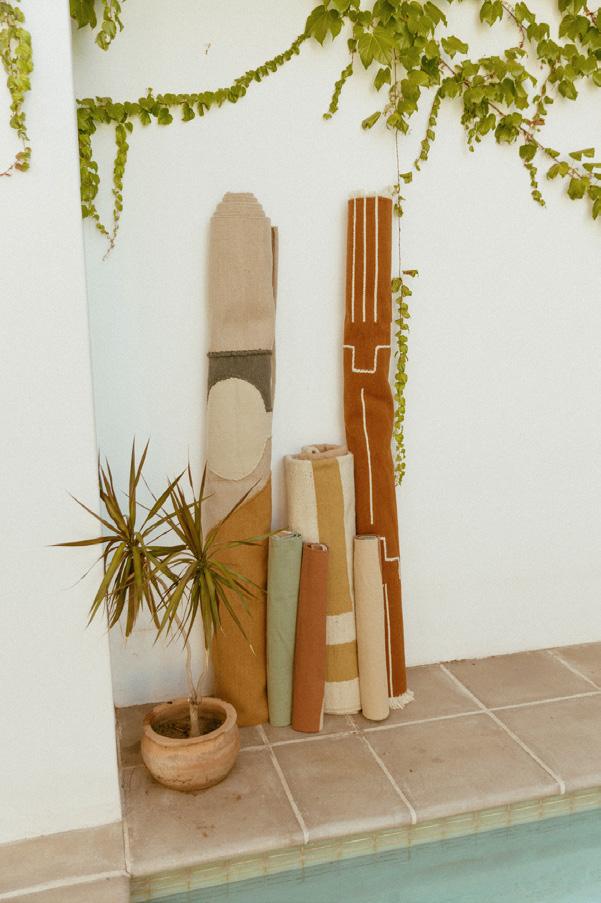
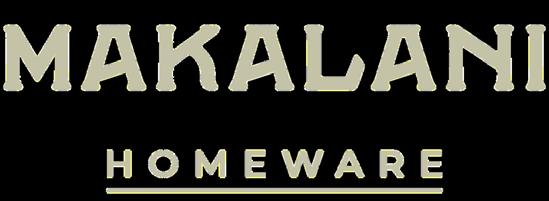

We deliver straight to your home, business or hotel!

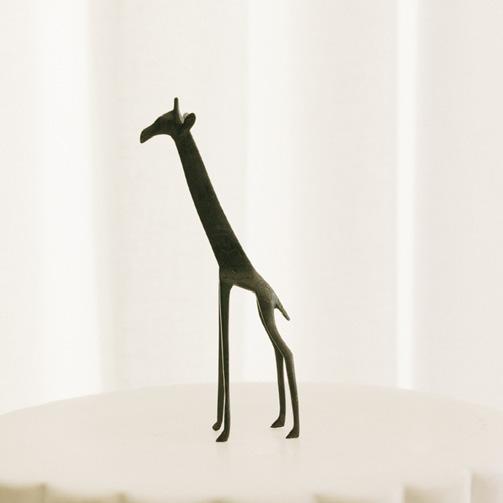

Namibia’s northern airport, Andimba Toivo Ya Toivo, was renamed from Ondangwa Airport in 2019 and on 7 October 2022, a statue was unveiled in honour of Andimba Toivo Ya Toivo at the airport. Ya Toivo was a founding member of the South West African People’s Organisation (SWAPO) and its predecessor, the Ovamboland People’s Organisation (OPO).
Following his release from Robben Island in 1984, Ya Toivo committed himself to building a democratic Namibia, serving as secretary general of SWAPO and in various ministerial portfolios in government. Ya Toivo retired from politics in 2006 and died in 2017.
The airport is about 85 km north of the world-famous Etosha National Park and in close proximity to Oshana, Oshikoto, Ohangwena, Omusati and the Kunene regions of Namibia. A restaurant and car rental services are available at the Andimba Toivo Ya Toivo for your convenience.
For travel schedules and more, contact the airport information office on
Tel: +264 65 240 515
Email: communications@airports.com.na Find us at and www.airports.com.na




The bilateral relations between Namibia and Indonesia have experienced significant growth and transformation over the past few years. The diplomatic relationship between Namibia and Indonesia was formally established shortly after Namibia gained independence in 1990. Since then, both countries have engaged in various cooperative ventures. Trade between the two countries has been on a steady rise, particularly over the past five years. In 2023, the total trade volume between the two countries reached US$10.6 million, marking a significant increase from the previous year. This growth highlights the potential and opportunities for further economic engagement.
Both nations recognise the need to overcome existing impediments to elevate their bilateral trade relations. His Excellency Wisnu Edi Pratignyo, ambassador extraordinary and plenipotentiary of the Republic of Indonesia, says Namibia holds a pivotal position as an important and promising economic partner for Indonesia on the African continent. “Despite the challenges, we have managed to maintain a commendable level of economic engagement. However, it is imperative that we prioritise overcoming any existing impediments to further elevate our bilateral trade relations,” says Pratignyo.
He further emphasises that economic co-operation between the two nations remains a focal point in discussions among Indonesian high-ranking officials. “This is in line with Indonesia’s economic diplomacy towards Africa, which is to transform the established political and historical relations into a robust economic cooperation for mutual benefits,” according to Pratignyo.
Namibia and Indonesia entered into an agreement in September 2022, allowing Namibian citizens a maximum stay of 60 days in Indonesia when applying for a visitor’s visa at the Embassy in Windhoek. Between 1 January 2022 and 20 May 2024, a total of 303 Namibians have visited various cities in the Asian nation. When visiting Indonesia, keep the following in mind:
Greet with a smile
Use your right hand
Dress modestly
Try local cuisine
Respect local customs and the environment
Learn basic phrases in Indonesian
Don’t use your left hand
Don’t publicly display affection
Don’t point with your feet
Don’t raise your voice
Don’t touch people’s heads
Don’t disrespect religious sites
Don’t use harsh language
Several forums and events are planned to further strengthen Namibia-Indonesia relations, with the second Indonesia-Africa Forum taking place in Bali, Indonesia, from 3 to 4 September 2024. This forum seeks to translate friendly political ties into tangible economic collaboration and serves as a platform to discuss and launch new joint initiatives.
Pratignyo adds: “The forum is motivated by Indonesia’s great desire to transform close and cordial political relations between Indonesia and Africa into concrete economic cooperation and to enhance technical collaboration among developing countries.”
Another significant event on the Indonesian calendar is the Trade Expo Indonesia (TEI), scheduled from 9 to 12 October 2024 at the Indonesia Convention Exhibition (ICE) in BSD City, South Tangerang, Indonesia. This event will showcase trade opportunities and foster deeper economic ties between the two countries. This year’s 39th edition of the TEI will be held under the theme “Building strong connections with the best of Indonesia”.
Maggie Forcelledo Paz
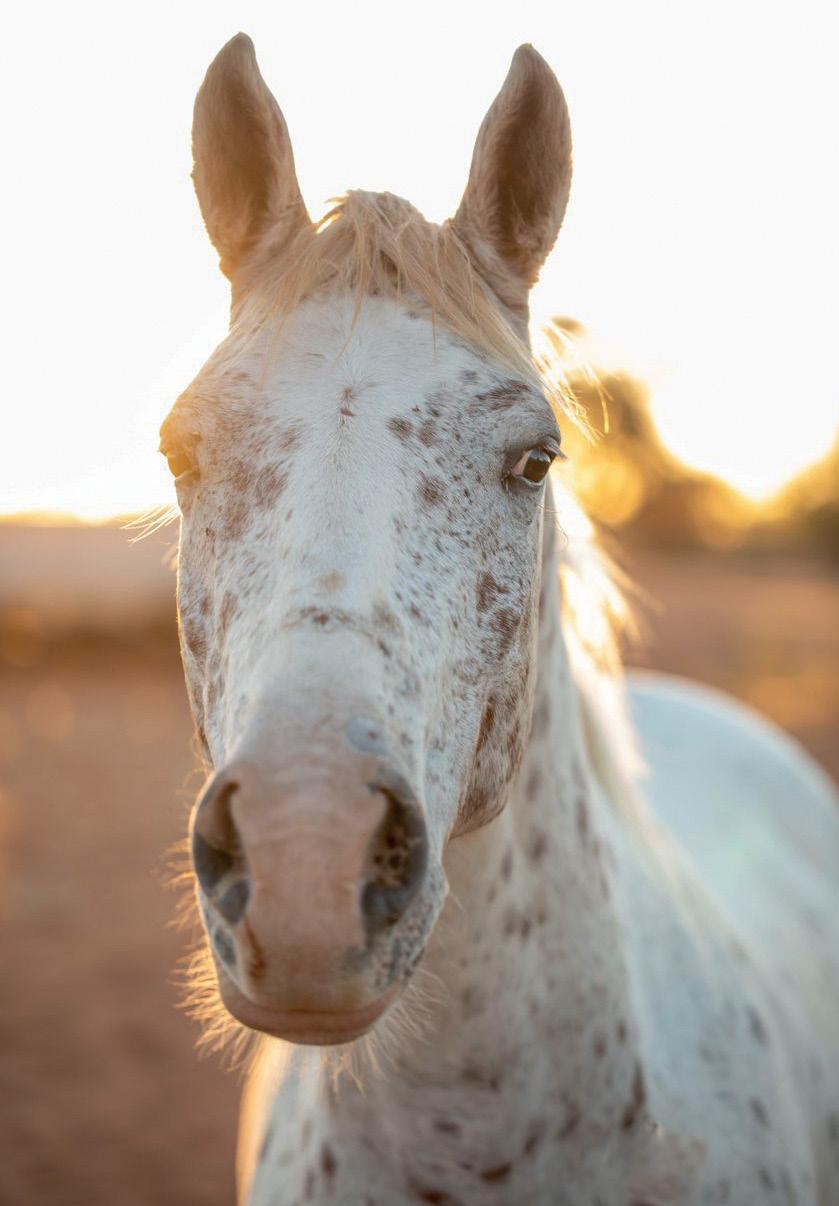







Discovering strength and connection at the WOW! Women's Retreat
What started with an invitation to 'let the serene embrace of nature and the gentle companionship of Appaloosa horses create a sacred space for growth', became a testimony to the importance of connections in an event that surpassed all expectations as it converged into a space of transformation, rejuvenation, healing, and joy at the WOW! Appaloosa’s Women's Retreat.
The retreat aimed to foster an environment where genuine connections, introspection, and engaging conversations could naturally blossom. At its heart was the profound connection between horses and humans. It is often noted that horses possess remarkable intuition, capable of reflecting a person's innermost emotions. Whether or not one subscribes to this belief, the evidence was undeniable at WOW! Appaloosa’s first Women’s Retreat.
A weekend of good food, camaraderie amongst women, and the gentle companionship of Appaloosa horses, together with insights from trained professionals culminated in an unforgettable experience. The retreat was aimed at ‘harmonising hooves and hearts’, and brought together the expertise of Tobia Kruger, who shared insights on natural horsemanship, and Susan Nel, an accredited Leadership & Transformational Coach.
Kruger taught the group that in natural horsemanship the focus lies on the communication between a horse and its handler, devoid of any use of force. This is a sacred journey where trust is built through 'join-up.' Engaging in the process of achieving join-up with a horse exposes us humans to vulnerability, yet it's also where the magic unfolds. Gradually, we may think we're teaching or training the horse, but in reality, the horse becomes our teacher. It offers profound insights into ourselves, prompting us to confront underlying aspects of ourselves that may require attention.





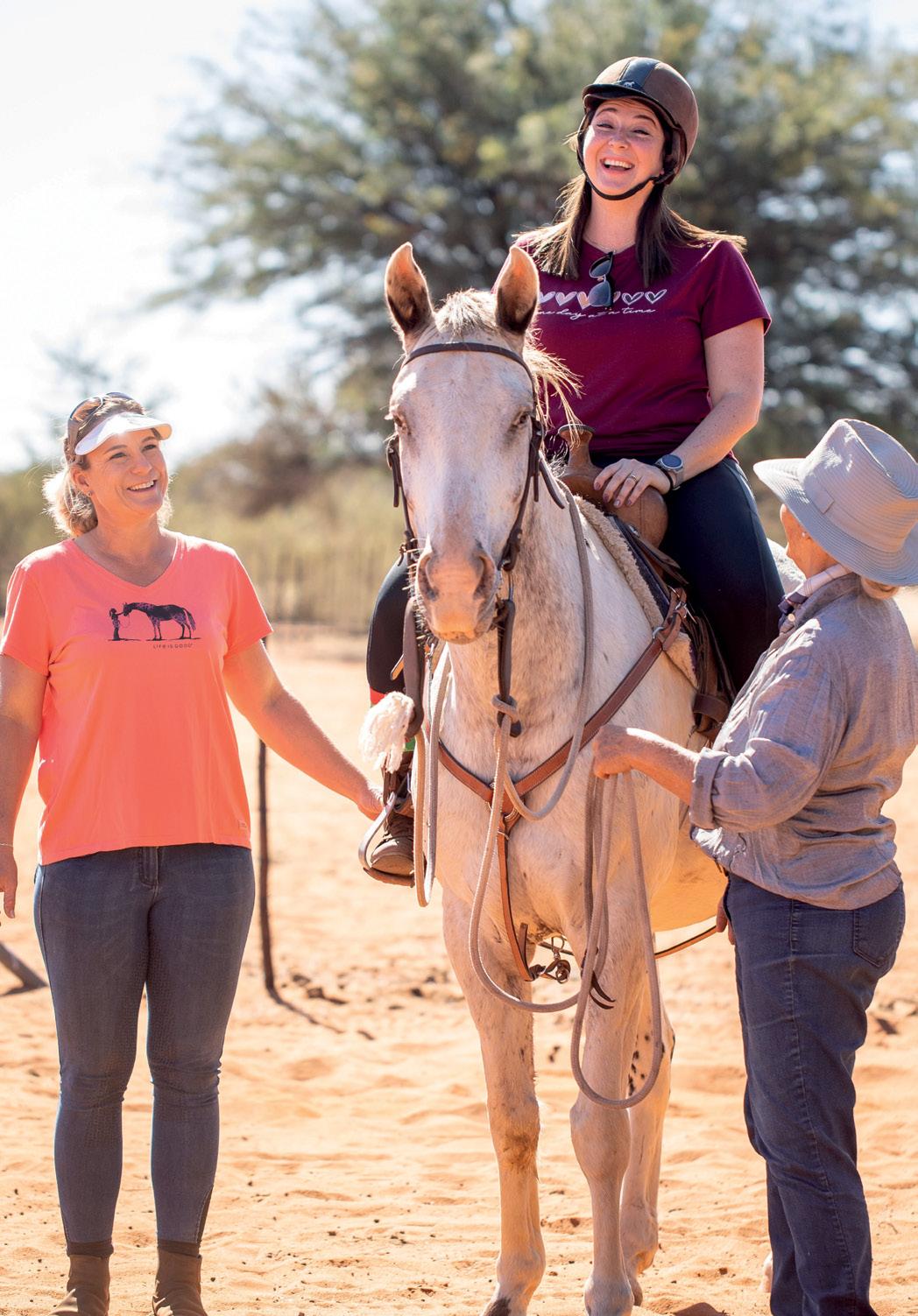
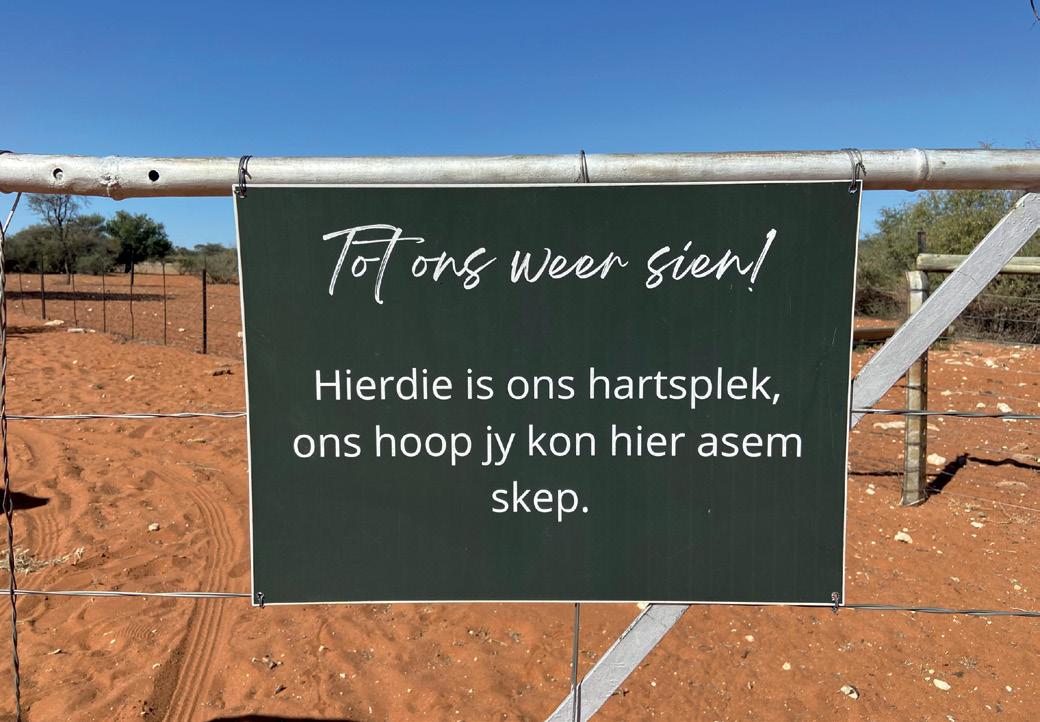

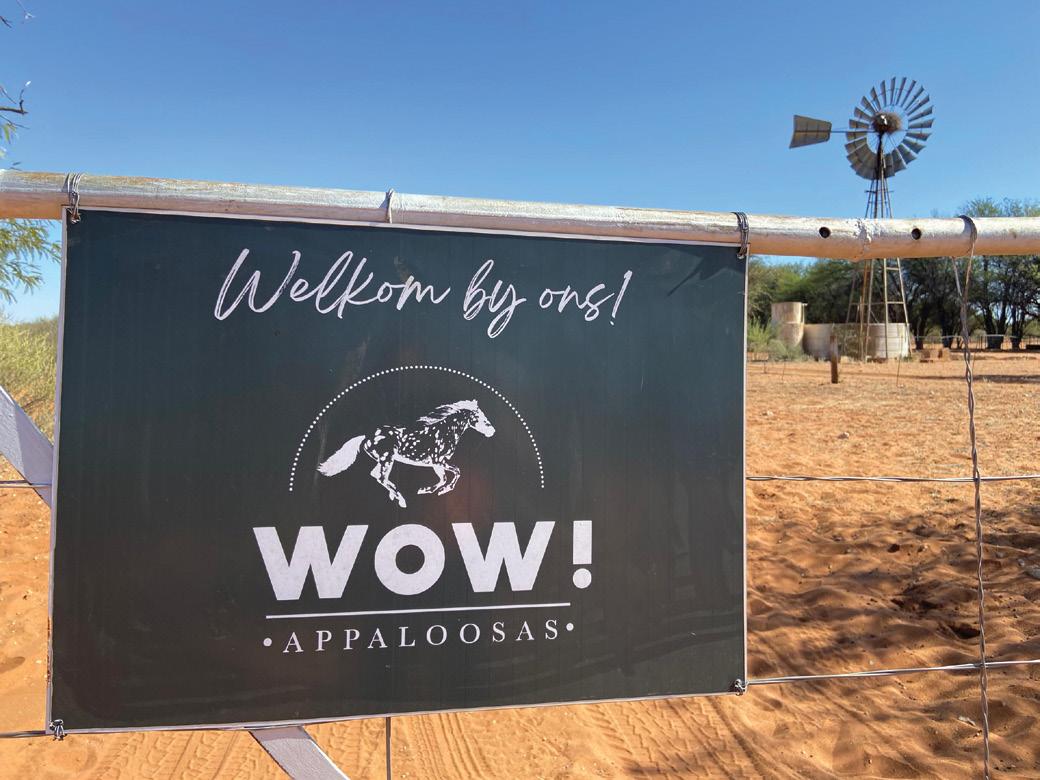
Nel led the group on a journey of self-discovery, leveraging photography as a catalyst for introspection. She skillfully guided the women to recognise their inherent beauty, both internally and externally, in a process that proved immensely enriching. This transformative experience fostered selfrealisation as the women came to acknowledge their capabilities, found solace in the realisation that they are not alone, and began to embrace vulnerability, understanding that they don’t always need to be the pillar of strength, embracing their natural desire for love and care.
What began as a vision to bring women together evolved into so much more. It transformed into a haven of safety and self-discovery. The women, who didn’t want to leave when the retreat was over, found solace in one another and a newfound sense of self. Words like "incredibly uplifting and genuinely transformative" and "an unforgettable experience" only scratch the surface of how participants described the retreat. For one woman, it ranked among the best weekends of her life. While the breathtaking natural surroundings, delectable cuisine, friendship, and heartfelt learning were undoubtedly highlights of the weekend, the true stars were the horses. By reflecting the emotions the women brought to the retreat, these majestic animals enabled them to see themselves more clearly and become aware of their feelings. This created a space for relaxation, tension release, and reconnection with their inner selves.
As we reflect on the profound experiences shared at our retreat, it's evident that our vision to bring women together has blossomed into a transformative journey of self-discovery and connection. The overwhelming joy and positive feedback from participants serve as a testament to the impact of such gatherings. Looking ahead, we eagerly anticipate our next retreat in October, where we will continue to foster support, cultivate transformative experiences, provide platforms for reconnection and ultimately harmonise hearts and hooves.
Learn more at www.wow-appaloosas.com

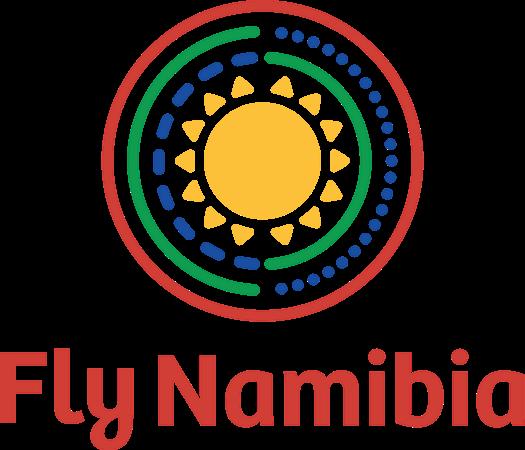
Flying
If you are a pet parent, you have probably thought about whisking your furry companion away on a sky-high escapade. But let’s be real, it is not a spur-of-the-moment decision. Flying with your pet requires some proper planning to ensure a tail-wagging experience for both of you. Check out this roundup of must-know guidelines for travelling with pets, service dogs and emotional support animals on FlyNamibia flights.
When it comes to flying with any furry friend, it is essential to plan ahead and make arrangements with the airline in advance. To book your pet’s travel with FlyNamibia, contact the reservations support desk at +264 83 339 0011 or email info@flynamibia.com.na. Be sure to reach out during the week, Monday to Friday, between 08:00 and 17:00, at least three business days before your departure.
Service dogs: trained assistants
Service animals are highly trained animals that provide essential assistance to people with disabilities. From guide dogs for the visually impaired to medical response dogs for those with medical conditions.
To ensure they can easily be identified and recognised for their important work, service dogs wear identifying vests and carry ID cards. When it comes to flying with FlyNamibia, service dogs are warmly welcomed aboard both regional and domestic flights. However, there are a few basic rules to keep in mind to ensure a smooth journey for everyone involved:
• Only one service dog per passenger is allowed in the cabin.
• Service dogs must be trained to assist with a disability or medical condition.
• Service dogs must wear a harness and identifying jacket, as well as remain under your control at all times.
• You will need to have your service dog’s up-to-date documentation with you, including health vaccination and rabies certificates.
• You will need to have documentation to confirm that your dog is a trained service dog.
• Remember to pre-book your service dog with FlyNamibia’s reservations support desk at least three business days before your flight.
• Give yourself ample time to check in and remember that your service dog will have to remain on the floor at your feet during the flight.
An emotional support animal provides a therapeutic benefit to a person with a mental health or psychiatric disability. These animals are not considered service animals, the key difference between the two being the training they receive. You can get a psychiatric service dog that requires extensive training to work specifically with people whose disability is due to mental illness. They could for example detect the beginning of psychiatric episodes and help ease their effects.
Meanwhile, an emotional support animal has the mandate to provide cuteness and cuddles – something no animal needs training for. An emotional support animal can be any domesticated animal, even a rabbit. Some airlines do not
allow emotional support animals on board, but FlyNamiba does, with these guidelines for travel:
• Emotional support animals weighing up to 7 kg are permitted in the cabin on FlyNamibia’s domestic flights.
• Emotional support animals must be properly harnessed and remain with their owner throughout the flight.
• Emotional support animals need the correct documentation from a licensed mental health professional to fly.
• Emotional support dogs will not be permitted to fly if they demonstrate disruptive or aggressive behaviour such as growling, biting or barking excessively.
• Emotional support animals are not allowed on Cessnaoperated flights.
• Remember to pre-book your emotional support animal with FlyNamibia’s reservations support desk at least three business days before your flight.
• Give yourself ample time to check in.
If you are considering bringing your pet along for the journey, whether it is a cat, dog or small bird, there are a few things to keep in mind:
• Contact FlyNamibia’s reservations support desk at least three business days before your flight to arrange for your pet’s travel.
• Ensure your pet’s crate meets all requirements, including being leak-proof, properly ventilated, made of metal, wood or a hard plastic/composite, and labelled as “Live Animal”.
• Remember to bring along your pet’s health and vaccination certificates, especially for rabies, as you will need a record that they received these annually.
• Be aware that FlyNamibia reserves the right to deny carriage of pets at their discretion, so it is best to plan ahead and confirm your pet’s travel arrangements in advance.
• Animals do not form part of the free baggage allowance, so you will be required to pay charges for your pet’s travel at the airport when you check in.
Side note: It is not recommended that you sedate your animals for travel. This is because these medications can create respiratory and cardiovascular problems as the animals are exposed to increased altitude pressures. Of course, if your veterinarian feels that tranquillisers are medically necessary for the trip, they can be taken but you will need to indicate the name and the dosage of the drug on your animal’s carrier.
Whether you are flying with a service dog, an emotional support animal or a beloved pet, FlyNamibia is committed to ensuring a safe and comfortable journey for all passengers, both human and furry. Understanding and following the guidelines will help you travel seamlessly and with peace of mind.



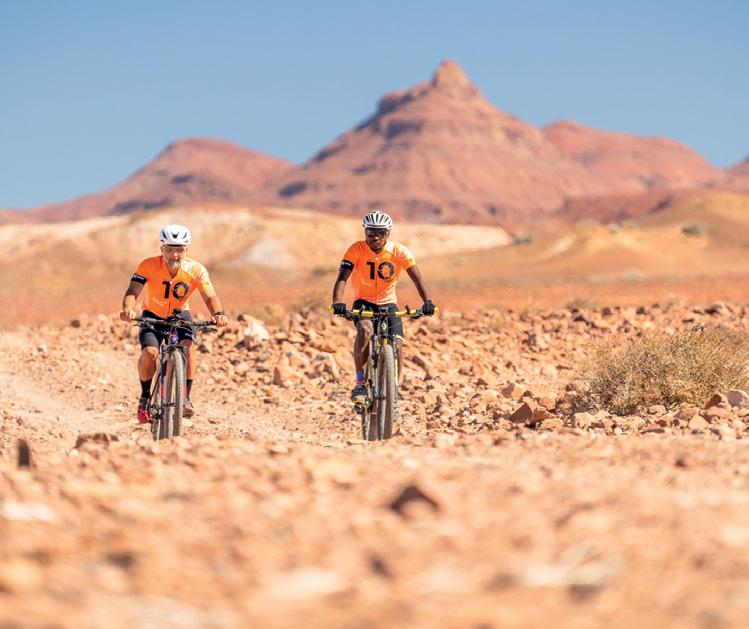





The landscape is vast and varied. As we gaze across the valley below, the ephemeral Aba-Huab River, with its towering Ana trees, winds its way through rugged mountains along its southern banks. Further north, the terrain transitions to the red rocky hills quintessential to Damaraland. In between lies a wide strip of soft sand. These terrains and varied landscapes played host to a group of adventurers on mountain bikes as they set off on a four-day journey into Namibia’s rugged wilderness… to ride for rhinos.
In the heart of Namibia's rugged wilderness, the 2024 RMB & Wilderness Ride for Rhinos event took a group of adventurers on a remarkable journey through the stunning landscapes of Damaraland. From 5-9 June, twenty enthusiastic mountain bikers, accompanied by an experienced crew, embarked on a four-day expedition through diverse terrains. This journey was not just an adventure but a mission to raise funds and awareness for rhino conservation and the communities that live and fight to protect this special species.
This year marked the 10th edition of the Ride for Rhinos, a tour that has grown significantly since its inception in 2015. Created by Venture Media and supported by title sponsors RMB Namibia and Wilderness, along with technical support from CYMOT, the event has consistently championed the cause of rhino conservation. The tour's primary goal is to support Save the Rhino Trust Namibia (SRT) and Children in the Wilderness, ensuring a future for both Namibia’s black rhinos and the next generation of conservationists.
The RMB & Wilderness Ride for Rhinos offers participants an unparalleled experience in nature. Guided by experienced mountain-bike guide Johan Fourie, riders traverse challenging terrains, experiencing firsthand the beauty and harshness of Namibia’s landscape. Evenings are spent in a wild camp set up by the tour crew, where participants enjoy delicious meals and fireside conversations about conservation, Namibia, and the plight of the black rhino.
Joining the riders are rangers from Save the Rhino Trust, who share their expertise on rhino conservation. These rangers, who patrol the rugged terrain on foot for 21-day shifts, provide invaluable insights into the daily challenges of monitoring and protecting the black rhino. The experience highlights the contrast between the riders' hightech bicycles and the rangers' relentless dedication on foot, underscoring the difficulty and importance of their work.
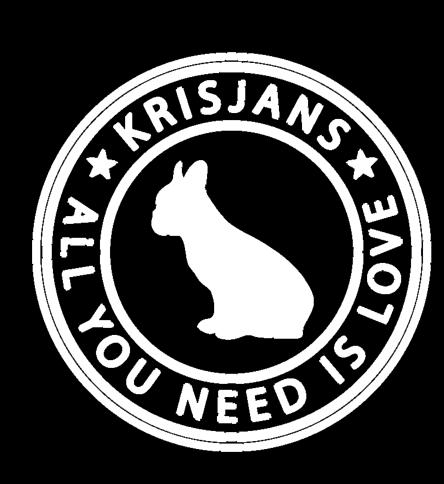


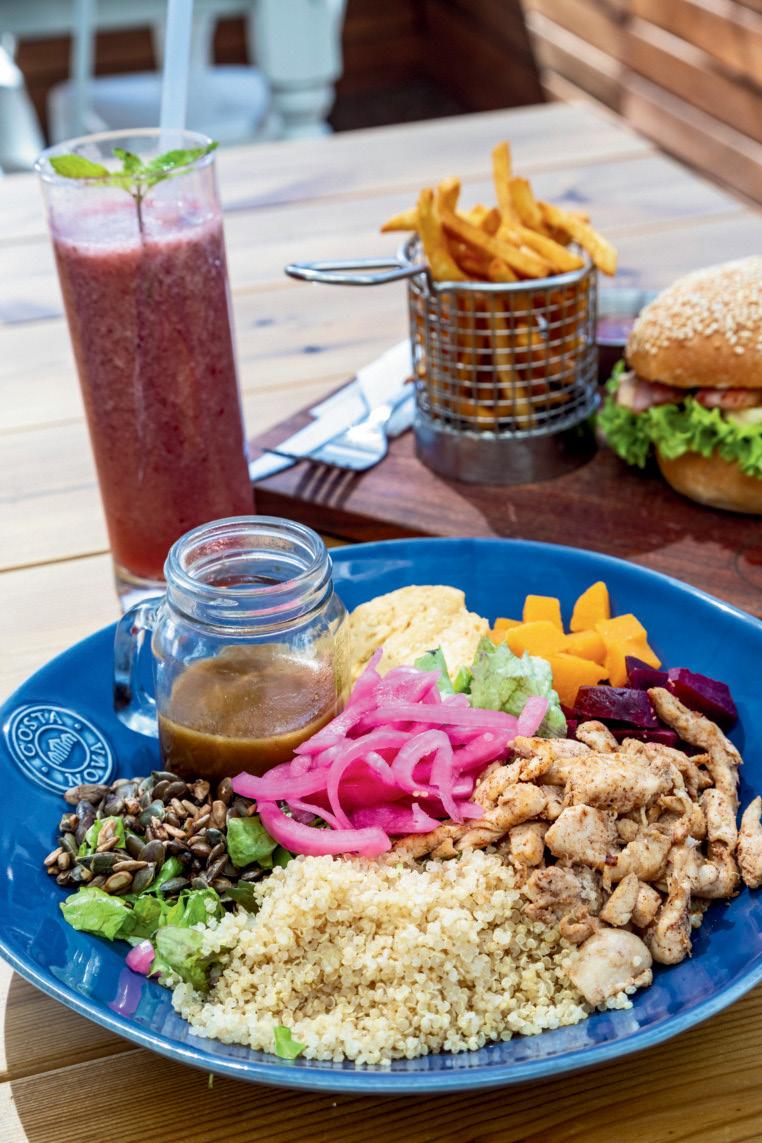




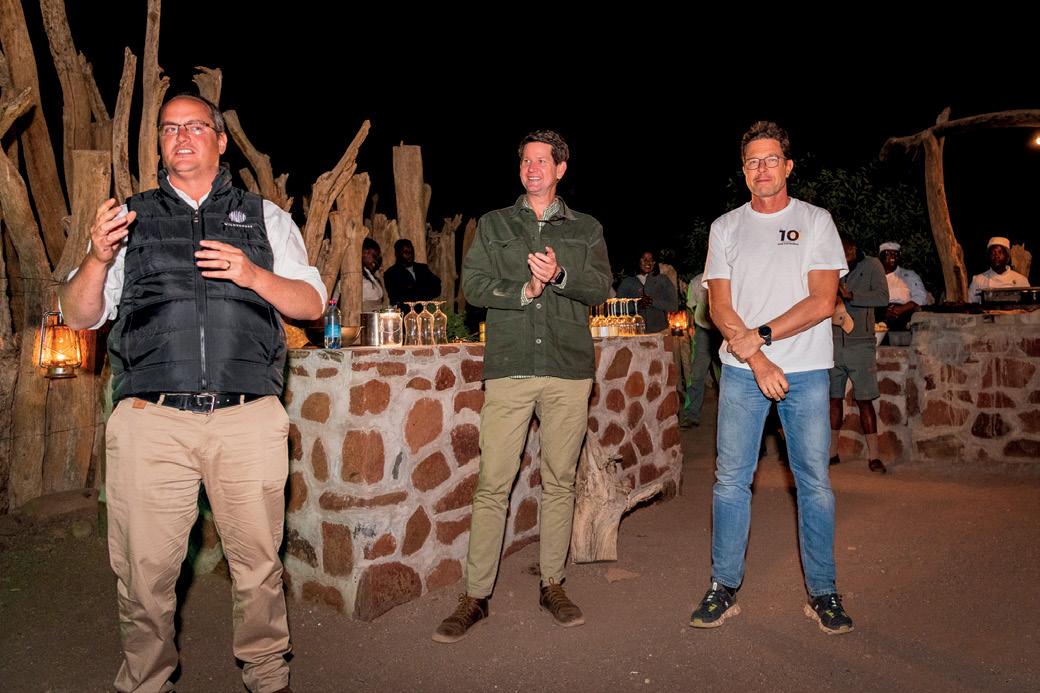

The tour culminated in a celebration of its 10-year milestone, bringing together longtime tour supporters and partners, such as Conrad Dempsey, head of FirstRand Namibia and one of the tour's founders, and Philip Chapman, head of RMB Namibia; Axel Theissen, Group Chairman of CYMOT; Alex Henderson, MD of Wilderness Namibia; Alexandra Margull, Group COO of Wilderness; Andrew Malherbe, COO of Save the Rhino Trust; and Agnes Tjirare, Project Lead of Children in the Wilderness.
This final evening was a testament to the success and impact of the Ride for Rhinos. It celebrated not only the tour's decade-long journey but also the accomplishments of its beneficiaries. The gathering underscored the collaborative spirit and commitment of all partners involved, highlighting the tour's role in fostering a community dedicated to conservation.
The Ride for Rhinos was born from a conversation between Rieth van Schalkwyk and Elzanne McCulloch of Venture Media, who sought to address the surge in rhino poaching by creating a platform that engaged Namibian companies and individuals in conservation efforts. Their vision was to blend adventure tourism with a meaningful cause, drawing on Namibia’s natural beauty and the growing popularity of mountain biking.
Partnering with Wilderness and CYMOT, the tour quickly gained traction, with enthusiastic support from sponsors like RMB. Over the years, the event has evolved into a significant conservation initiative, raising funds and awareness while providing participants with a transformative experience in nature.
Beyond the thrill of the ride, the event has a profound impact on rhino conservation and community development. Save the Rhino Trust's efforts in monitoring and protecting Namibia's black rhinos are bolstered by the funds and inkind materials raised through the tour, as well as the links and connections made between the organisation and tour participants and their respective companies. Additionally, Children in the Wilderness empowers young Namibians to become future conservation leaders, fostering a deep connection to their natural heritage.
As the Ride for Rhinos celebrates its 10th anniversary, it stands as a testament to what can be achieved through collaboration and dedication. The participants, sponsors, and organisers have all played a part in this incredible journey, riding not just for the thrill of adventure, but for the preservation of Namibia's natural treasures and the future of its wildlife.
The 2024 RMB & Wilderness Ride for Rhinos was a celebration of conservation, community, and the enduring spirit of adventure. As the riders departed, they left with a renewed sense of purpose, having experienced the beauty of Namibia and the importance of protecting its precious wildlife. Together, they have made a lasting impact, ensuring that the black rhino, and Namibia’s wilderness, will continue to thrive for generations to come.
Elzanne McCulloch







On her final voyage as the Face of FlyNamibia, the airline took Taimi Nuunyango to the cultural and economic hub of Ondangwa. It has been a year of experiencing Namibia’s vast horizons through Taimi’s excitable and earnest lens. From her first ever flight to Lüderitz, an adventure to Katima Mulilo, a rendezvous in Cape Town, a visit to Victoria Falls, and now, a journey to Ondangwa, Taimi has illuminated the magic of travel and connection. Before we bid her farewell, it calls for one last glimpse into Taimi’s experience of the joy of flying, the conscious travel activities that enrich each destination, and why Ondangwa remains one of FlyNamibia’s favourite places.
How was the flight from Windhoek to Ondangwa?
The flight from Windhoek’s Eros Airport to Ondangwa’s Andimba Toivo ya Toivo Airport was short, scenic and smooth. Having had a window seat, I was treated to a variety of picturesque views that highlighted the region’s unique landscape, including the vast savannah and scattered rural villages with traditional homesteads. Each scene felt like a homecoming.
What surprised you most about the town of Ondangwa?
Ondangwa is a lively town! I experienced it as a hub of activities with a rich cultural history and a warm, welcoming community that immediately makes you feel at home.
Which activity would you consider a must-do when in Ondangwa?
I would recommend visiting the Nakambale Museum. This museum offers a fascinating glimpse into the history and culture of the Ovambo people, as well as the profound impact of Finnish missionary Martti Rautanen. Another essential activity would be exploring the local markets, such as the Omatala, to experience traditional crafts, thrifting, foods and daily life – a definite must-add to your itinerary.
Ondangwa is a melting pot of Ovambo culture. What stood out for you?
The town’s vibrant markets are filled with traditional crafts, textiles and foods, providing an authentic taste of local life. We were fortunate to visit a traditional homestead in Eheke, a village situated outside Ondangwa. The experience evoked memories of home for me.
The northern part of Namibia holds a special place in my heart – it is where I grew up, specifically Okashiya village which is located in the Omusati Region. The trip to Ondangwa stirred deep feelings of nostalgia and connection, especially during the traditional house visit. I revisited familiar landscapes, food and
homestead structures that shaped my formative years. This experience reinforced my sense of identity and roots, reminding me of the rich cultural heritage and warmth of the Namibian people that I carry with me wherever I go.
During your time as the Face of FlyNamibia, what were some memorable moments?
One of the most memorable and proudest moments of my year as the Face of FlyNamibia was seeing myself on a FlyNamibia billboard and sharing that moment with my parents. Being the first Namibian to grace a FlyNamibia billboard as the brand ambassador marked a significant milestone, not only for me personally but also for my community and country.
Other standout moments of my year as the Face of FlyNamibia was experiencing my first ever flight, as well as having the opportunity to fly to Cape Town in South Africa and Victoria Falls in Zimbabwe.
My time as the Face of FlyNamibia deepened a profound appreciation for Namibia, especially our culture, wildlife, art, craft and scenic landscapes. It fostered within me a sense of pride and responsibility to promote the beauty of our nation.
Any tips for the next Face of FlyNamibia?
Stay true to yourself and allow your genuine passion for Namibia to shine through. Authenticity resonates with people and creates a lasting impact.
Take time to connect with locals and understand their stories. These connections will enrich your experience and offer unique perspectives.
Use social media platforms effectively to share your journey, promote FlyNamibia and engage with a broader audience. Authentic and regular updates can significantly boost your reach and impact.
Lastly, remember to have fun and enjoy the journey!









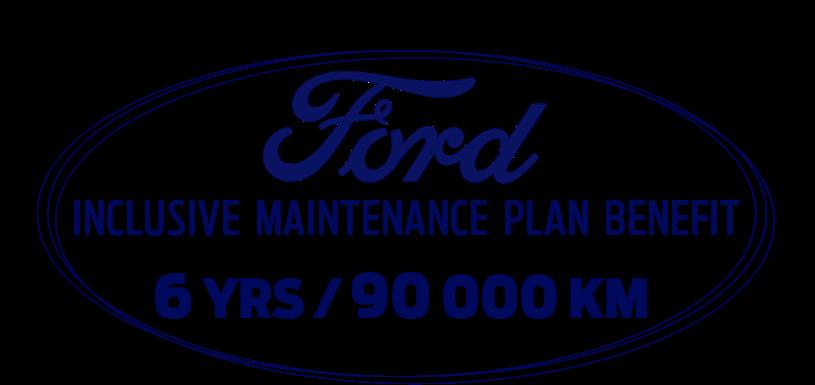

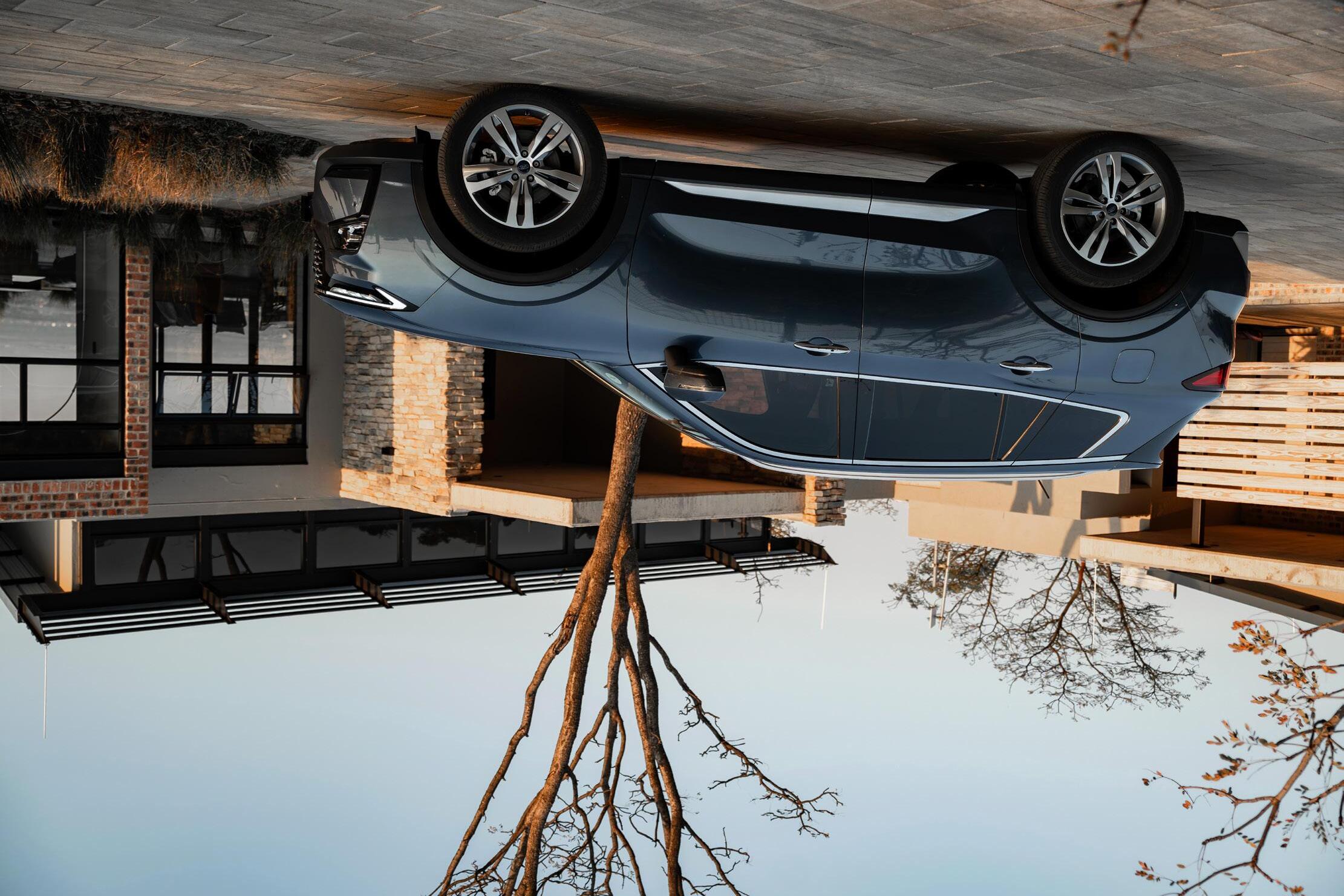

In the Omusati Region, where concerns over food security are mounting due to the impending drought, rice cultivation is expanding. The University of Namibia’s Ogongo Campus, strategically located in the CuvelaiEtosha Basin of north-central Namibia, plays a pivotal role in this development. Specialising in agriculture, natural resource management and environmental science, Ogongo has become a hub for advancing expertise in these critical areas.
Last year, Debmarine Namibia sponsored agricultural equipment for the Ogongo Campus, aiming to bolster rice production, enhance poultry development projects and support research, training, and community chicken production activities. This investment has proven fruitful, with the campus achieving a significant milestone of harvesting 17 tonnes of rice from seven hectares – an impressive increase from its previous yield on three hectares. Plans are now underway to further expand the rice production to 10 hectares.
The success of Debmarine Namibia’s sponsorship was recently celebrated at the Annual Rice Harvest Festival, themed “Enhancing Household Food Security through Rice and Poultry Farming.” The festival recognised several poultry and rice farmers for their dedication and hard work. Debmarine Namibia CEO Willy Mertens, in attendance at the festival, expressed gratitude to the University of Namibia (UNAM) for equipping farmers with valuable knowledge, which has been showcased through their impressive agricultural projects.
“I am thrilled to see farmers taking proactive steps to enhance our country’s food security. I encourage our farmers to utilise the training provided by our students and trainers to improve their production,” remarked Mertens. He highlighted the critical role of initiatives like wetland rice in boosting food security by harnessing rainwater.

Mertens commended the Japanese government and the Japanese International Cooperation Agency (JICA) for initiating the rice cultivation programme at UNAM’s Ogongo Campus. “Our decision to support the expansion of rice cultivation at UNAM’s Ogongo Campus builds upon the solid foundation laid by JICA,” he added.
UNAM’s vice-chancellor, Prof. Kenneth Matengu, echoed these sentiments, noting that since JICA’s involvement in 2012, the campus has been instrumental in training local farmers in rice cultivation and providing ongoing support in rice processing, significantly advancing agricultural development in the region. He thanked Debmarine Namibia for their invaluable support, which enabled the campus to procure essential poultry equipment, thereby increasing the poultry hatchery capacity from 370 to an impressive 4,000 chicks annually.
Debmarine Namibia’s support, valued at N$750,000, included crucial equipment such as an incubator for fertilised eggs, chicken cages, chick crates, a pelleting machine, heat lamps, a beverage cooler, a water pump, irrigation pipes for rice paddies and rice seedling trays, among others.

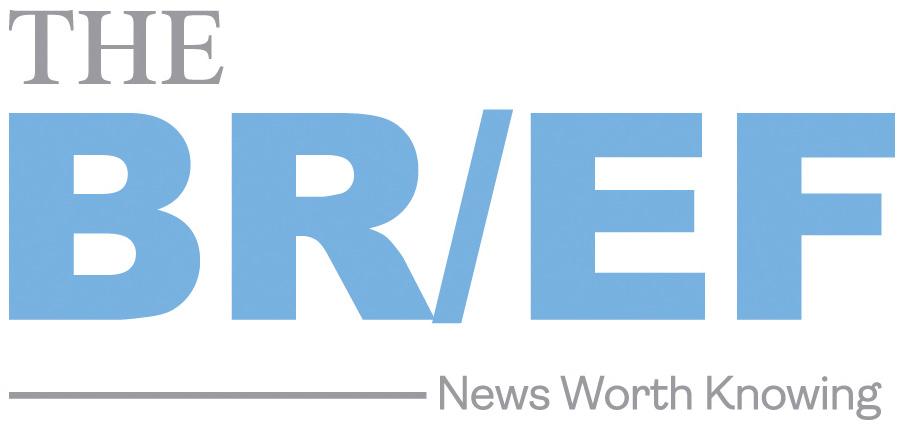

The Bank of Namibia (BoN) and the Development Bank of Namibia (DBN) have signed a three-year Memorandum of Understanding (MoU) to bolster economic growth and development in Namibia.
The agreement, signed on Monday, aims to leverage the combined expertise and resources of the BoN and DBN to achieve sustainable economic development and social welfare for Namibians.
The MoU establishes a framework for cooperative engagement, facilitating collaboration on initiatives that promote economic growth and development in Namibia, which includes sharing relevant data and information, conducting joint research, organising economic seminars, and working on projects that address specific developmental challenges.
“This collaboration marks a significant milestone in our shared commitment to fostering economic growth and sustainable development across our nation. By leveraging our combined resources and expertise, we aim to create a robust financial ecosystem that supports innovative projects, empowers small and medium enterprises, and drives inclusive economic progress. Together, we are poised to make a lasting impact on Namibia’s economic landscape, ensuring prosperity and opportunities for all Namibians,” said DBN CEO, John Steytler.
Leonie Dunn, Deputy Governor of the BoN, said the MoU represents more than just a partnership on paper; it reflects a shared vision of fostering economic growth, supporting
sustainable development, and addressing developmental challenges in Namibia.
“Our collaboration embodies the spirit of unity and progress, as we leverage our combined expertise to strengthen the resilience of our economy and deliver meaningful impact. Together, we will go far,” she said.

Namibia’s Mass Housing Development Programme has completed and handed over 4,446 housing units across various regions, the Minister of Urban and Rural Development, Erastus Uutoni, has revealed.
The Mass Housing Development Programme was adopted by the Cabinet in 2013 and the Programme implementation started in 2014. The Minister highlighted this achievement during a ceremony marking the handover of 119 newly completed houses at Swakopmund. Uutoni expressed pride in the progress made, particularly noting the recent completion of 319 houses ahead of schedule despite previous challenges.
“I wish to commend the contractor, New Era Investments, and our dedicated government team for their relentless efforts in achieving this milestone,” stated Uutoni during his address.
He said the completion of these houses represents a significant step forward for the programme, which has faced setbacks including legal disputes and funding challenges.
“We are aware of the challenges that delayed some projects, such as the legal dispute that affected 505 houses at this site in Swakopmund. However, through perseverance and collaboration, we have managed to resolve many of these issues,” Uutoni said.
The Minister outlined the government’s commitment to completing the remaining 572 units that are currently in various stages of completion.
“We are prioritising the resolution of outstanding issues, including the dispute affecting 186 houses here in Swakopmund, as well as projects in Windhoek and Opuwo,” he affirmed. Regarding plans, Uutoni emphasised the government’s dedication to addressing housing needs across all income groups.
“We are fully aware that we need to do more to meet the needs for decent and affordable housing for all our people. In this connection, the Cabinet approved the revised National Housing Policy with a 5-year Implementation Action Plan in November last year,” he explained.
The Policy seeks to reinforce and scale up ongoing collaborative actions and partnerships between the Government, community-based organisations and the private sector.
It gives special attention to improving conditions in informal settlements and meeting the housing needs of ultra-low, low and middle-income groups, which constitute approximately 88% of the population in need of affordable land and decent housing.
“We are finalising the launch of this policy and its implementation plan to further enhance our efforts in providing decent and affordable housing,” the Minister added.
CONSTRUCTION SECTOR EMPLOYEES SET FOR 9% MINIMUM WAGE INCREASE
Construction Industries Federation of Namibia (CIF) and the Metal and Allied Namibian Workers Union (MANWU), have reached a two year wage agreement which will see a 5% wage increase in the first year and an additional 4% increase in the adjusted minimum wage in the second year.
CIF CEO Bärbel Kirchner said the increment was effective upon the publication of the Collective Agreement which happened on the 6th of June and outlines the two-year period of regulated wages and employment practices.
“That would mean that in the first year, the minimum wage payable for an unskilled labourer will be N$18.72 and in the

second year N$19.46. All other conditions of employment mostly remain the same as in the previously gazetted Collective Agreement,” Kirchner said
Kirchner further emphasised the importance of a level playing field within the industry, ensuring all construction businesses adhere to the minimum wage standards.
The transparency, she argues, strengthens fair labour practices and eliminates potential disadvantages for CIF members who previously adhered to these terms.
“For us, it is important that the implementation date of the agreement is on the day the Collective Agreement is published in the Government Gazette. This will prevent our members are disadvantaged before the date of promulgation; i.e. only they would have to adhere to the conditions. Now that the Collective Agreement is gazetted, every single business in the construction sector would have to adhere to it,” she said.
She also highlighted that the minimum wage increase applies only to designated worker categories and does not guarantee automatic wage increases for all employees within those categories.
The CEO said employers who already offer wages exceeding the minimum wage, are not obligated to adjust salaries based on this agreement.
“It is important to note that the increase of the minimum wage payable, is not an increase across the industry. It is only an increase of the minimum wage payable for the categories of employees as listed in the Collective Agreement,” she said.



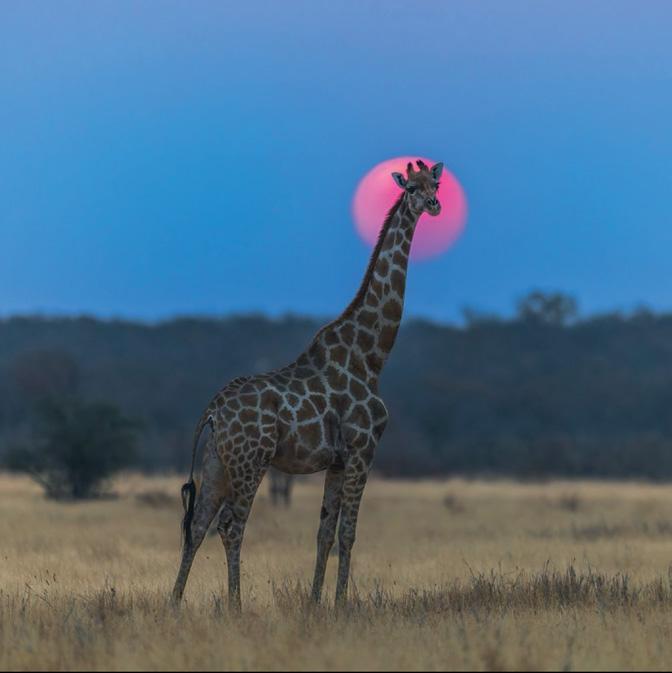

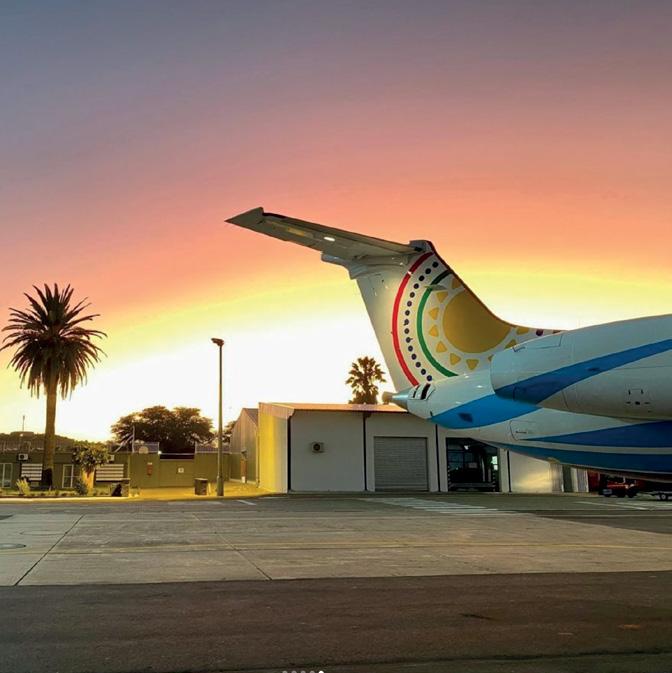







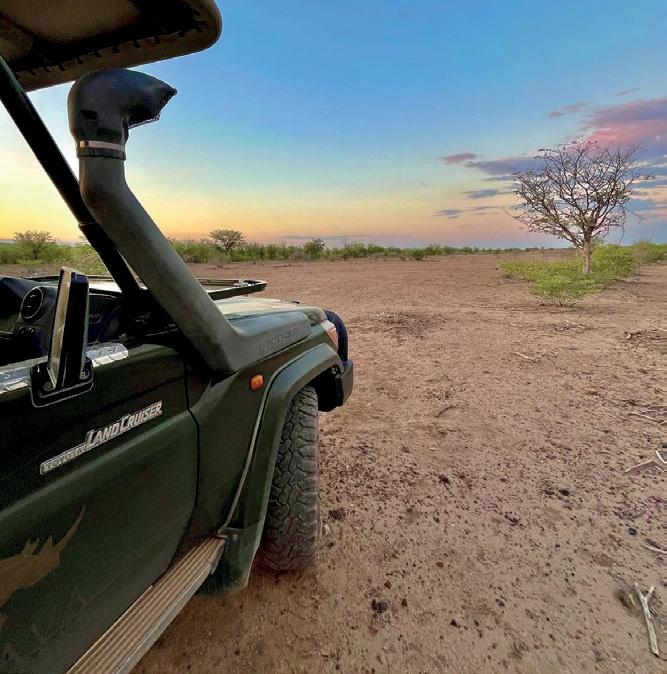
Have you engaged in recent discussions about the demise of the traditional office? It is a hot topic, echoing through hallways, around water coolers and across media platforms. A recent CNN article, boldly titled “The office, as you know it, is dead”, delves into the possibility that remote work is not just a temporary response to the Covid-19 pandemic but rather heralds a profound transformation in our work culture. The article highlights various reasons behind the declining demand for traditional office spaces, citing employees’ proven ability to maintain productivity beyond the confines of cubicles. Notably, CEOs are taking note of the cost-saving advantages, from reduced overheads to savings on items as small as the office coffee bill or utility expenses.
Globally, a compelling sign of this shift can be seen in the increasing number of vacant high-rise buildings. According to a Forbes report, less than 50 percent of the world’s office spaces are currently occupied. Examining the practices of leading companies, one finds a pervasive trend toward flexible work cultures. Take Google, for instance, which has long embraced remote work, emphasising trust and autonomy, with employees empowered to deliver results from any location. Microsoft adopted a hybrid work model, blending remote and in-person collaboration. Meanwhile, Shopify champions flexibility and autonomy, giving employees the freedom to select their optimal work environment.
The era of office-centric culture has become a relic of the past. Previously you would find that some companies define themselves by their office culture. Today this does not hold the same allure for employees. Forward-thinking businesses now aim to cultivate workspaces that employees actively want to be in, rather than places they feel obligated to occupy. In today’s competitive landscape, attracting and retaining top talent is paramount to success, prompting savvy companies to focus on intangible factors such as an adaptable and appealing work environment. With the advent of advanced communication tools, project management software and virtual collaboration platforms, the shift towards remote work environments has become feasible and increasingly prevalent.
The landscape of work has undergone a profound transformation in recent years, yet many companies
persist in clinging to outdated practices, attempting to recreate office cultures that employees left behind when they abandoned their desks in 2020. Today, employees want flexible work, equitable pay and a focus on humanity in the workplace which transcends the things that were perks in the past.
According to a recent BBC article titled “‘Office culture’ as we know it is dead. Workers have other ideas”, contemporary employees are motivated by factors such as fair compensation, healthcare benefits and flexible time off. In today’s climate, offering perks like trust falls and brewed coffee on tap may come across as tone-deaf and out of touch with employees’ priorities.
Research indicates that remote workers are more productive, healthier and enjoy a better work-life balance. They also take fewer sick leave days, stay motivated for longer and tend to prioritise their freedom over salary increases. This does not mean that working remotely does not come with its challenges, most notably the inability to unplug after working hours, maintaining team cohesion, or managing communication breakdowns. Yet, with the advancement of supportive work-from-home technology, many of these challenges are being effectively addressed.
If you are poised to embrace the future of work and transition towards remote operations, here are some essential tools to consider:
Communication tools
Platforms like Slack, Microsoft Teams and Zoom have revolutionised remote communication by offering real-time messaging, video conferencing and file-sharing capabilities.
Project management software
Platforms like Asana, Trello and Basecamp provide centralised platforms where teams can create tasks, set deadlines, assign responsibilities and monitor project milestones.
Virtual collaboration platforms
Platforms like Miro, Mural and Figma enable teams to collaborate visually in real time, brainstorm ideas, create prototypes and design solutions together.
Kirsty Watermeyer

The short-term vacation rental market is a billion-dollar industry. In South Africa, it is expected to generate a revenue of US$394.50m in 2024. As travellers seek out a wider variety of accommodation options, particularly self-catering and less “touristy” stays, renting out an investment property is a great way to generate passive income. And while short-term rentals are measured by a different set of criteria than traditional hotels and lodges, stylish decorating and attention to finishes remain crucial for your property to stand out from the rest.
In Namibia, this industry is still in its infancy. Whether you are looking to enter this market as a host, or simply enjoy good interior design, here are a few short-term rental options in Windhoek and Swakopmund for inspiration.



Cool contemporary on Independence Avenue
Its central location right on Windhoek’s main street could have made this studio loft a contender for cold and grey decor, yet the host of this contemporary space managed to inject incredible warmth to this city centre space. The perfect retreat for two, this apartment is self-catering, and guests can sip a morning coffee on the little balcony as the city wakes up. Wooden finishes, lots of texture and late afternoon sun… yes, please!
In the heart of town, yet located on a quiet residential street, Frangipani House is a singleroom accommodation for two guests. Decorated with antiques collected on the host’s travels, the spacious bedroom, en-suite bathroom and outdoor terrace are divinely decorated. With rustcoloured lime wash, large French windows and a countryside vibe, the space is warm, inviting and feels like something out of a movie. Frangipani House can also be booked for photoshoots.



This three-bedroom penthouse makes a serious case for the power of spiral staircases and commanding bookcases. The beachfront, the perfect amount of coastal-style interior decor as well as the apartment’s spacious living room, upstairs bar and entertainment areas all scream “west coast holiday”. Renovated bathrooms are always a plus, and subtle hues of seafoam green and eggshell blue paired with light stained wood makes this space rather dreamy. But it is the undisturbed seascape from a crisp white sofa, right by the fireplace, that truly seals the deal.

Situated just off the lively Liliencron Street, this two-bedroom townhouse shares real estate with Windhoek’s food and nightlife scene. This ubercool stay charms with stone tile floors, minimalist finishes and lots of attention to detail. A fully fledged kitchen and divine bed linen tick the essential boxes, while a quaint outdoor space and African-inspired textural decor soothes the aesthetic soul.
Advocates of pianos as decor and exposed roof trusses will find that this industrialesque loft beautifully balances warm and cold, classic and contemporary. A showstopper kitchen and adjacent outdoor entertaining area might just peel you away from Swakop’s restaurants, while a double-volume living space with pared-back neutral decor pieces amps up the cosy atmosphere. Bohemian elements like the macrame wall hanging in the loft sleeping space, pretty plants and a Persian-inspired rug complement the sexy industrial architecture.

Literally on the doorstep of one of Swakopmund’s most iconic buildings, Haus Hohenzollern, sits this two-bedroom duplex in its very own historic building. Wooden floors throughout, high ceilings and a pretty peppermint kitchen are some of the key features, while updated bathrooms and the perfect outdoor space for a sunny brunch and people-watching add to the allure. A mix of rustic, coastal and cottage-inspired decor items fill the space and make it truly homely.






You are not alone, trillions of living microbes inside your gut occupy you. The gut microbiome has taken centre stage lately, hailed as the latest trend and all the rage for its profound impact on brain function, mental health, and overall well-being.
These microbes are so influential that some researchers even consider them a separate organ, which shapes our metabolism, susceptibility to allergic and inflammatory diseases, and even responses to medical treatments. Numerous studies are demonstrating that it is the bacteria in the gut that can predict the onset of diabetes, or determine neurodegenerative disorders including autism, Parkinson’s disease, and Alzheimer’s.
Your bodies house an unbelievable amount of microbes in the large intestine that are constantly communicating with the body's cells, aiding in nutrient digestion and fostering a mutualistic relationship that supports normal bodily functions. If you haven't watched the new Netflix documentary "Hack Your Health: The Secrets of Your Gut," it's a must-see. Featuring celebrity gut specialist Giulia Enders, MD, the film delves into the fascinating world of our digestive system and the trillions of bacteria and microorganisms within. Dr. Enders reminds us, "It's completely crazy when you think about it because this is the organ that keeps you alive."
Have you ever felt “butterflies” in your stomach when you’re excited or nervous? Or perhaps you came to the realisation that you are hungry after seeing an advert for pizza? Well, that’s your gut communicating with your brain. Added to this is the fact that your microbiome gives your body a unique response to food, it determines how much something will elevate your blood sugar level for example, and whether or not that food makes you gain weight.
Proving this point, one groundbreaking experiment at the University of Chicago, transplanted gut microbes into mice. Some of these microbes were from obese and others from lean mice. The outcome: despite eating the same diet, the mice who got obese mice microbes put on weight, while the ones who got lean mice microbes didn’t.
This is offering an explanation why one person is lean while the other is overweight, even if they follow the same eating pattern.
The brain in your tummy
Dubbed the "second brain," the gut produces numerous neurotransmitters, mirroring those generated by the brain, such as serotonin and dopamine, pivotal in mood regulation. Remarkably, approximately 95 percent of serotonin, a crucial chemical messenger that influences our mood, sleep, or digestion is synthesised by gut bacteria.
Gut microbiota also aids in the production of other neurotransmitters and chemicals like dopamine and tryptamine, which play a role in anxiety and depression.
There’s a lot of emerging research on the topic, and it’s leading people to deduce that we have little pharmacies in our guts, where thousands of different drug-like compounds are being produced by our gut microbes and getting absorbed into our bodies. Still, much research is needed to understand how this all works. For example, we now know that people with autism or depression often experience constipation, but researchers are still figuring out how this happens.
Immunity and your gut
Another surprising find is that the gut serves as the command centre for roughly 70 percent of our immune system. While certain bacteria are linked to illness, many are essential for overall health, including immune function, heart health, and weight management.
These beneficial bacteria are crucial in training the immune system to combat harmful organisms and produce vital disease-fighting chemicals that our bodies cannot generate independently.
You are what your microbiome eats
What you consume affects your gut microbiome. Contrary to popular belief, fostering a healthy gut isn't solely about calorie counting or avoiding "bad" foods. It’s so much more about providing diversity and whole foods.
To encourage a variety of microbes to live in your gut, you want to eat a variety of foods and you want to consume foods that digest slowly so that they make it down the digestive tract and provide food for the microbes in your colon. This is why foods that are absorbed into the bloodstream quickly, like sugars or simple carbohydrates are not good, but foods that take a long time to break down, like broccoli, are great.
It’s all about the fibre, the more the food has fibre the better it is for your microbes. This is why it’s better to eat your fruits instead of drinking them in juice.
More pro tips include aiming for 20-30 different fruits and vegetables per week to try to hit that optimal diversity score, as well as to add more fermented foods into your diet - kimchi, kefir, and sauerkraut contain probiotics, live microorganisms that can increase microbiota diversity in the gut.
Why this matters
While genetics once seemed to dictate our health outcomes, we now recognise the pivotal role of the microbiome in conditions ranging from obesity to depression and even allergies. Microbes dominate our bodies, constituting 70 to 90 percent of all cells and accounting for 99 percent of unique genes.
In encouraging news, research has demonstrated that a person's gut responds rapidly to changes in diet and lifestyle. By making a few affirming adjustments, you can transform your sombre gut into a flourishing ecosystem of health.
Kirsty Watermeyer
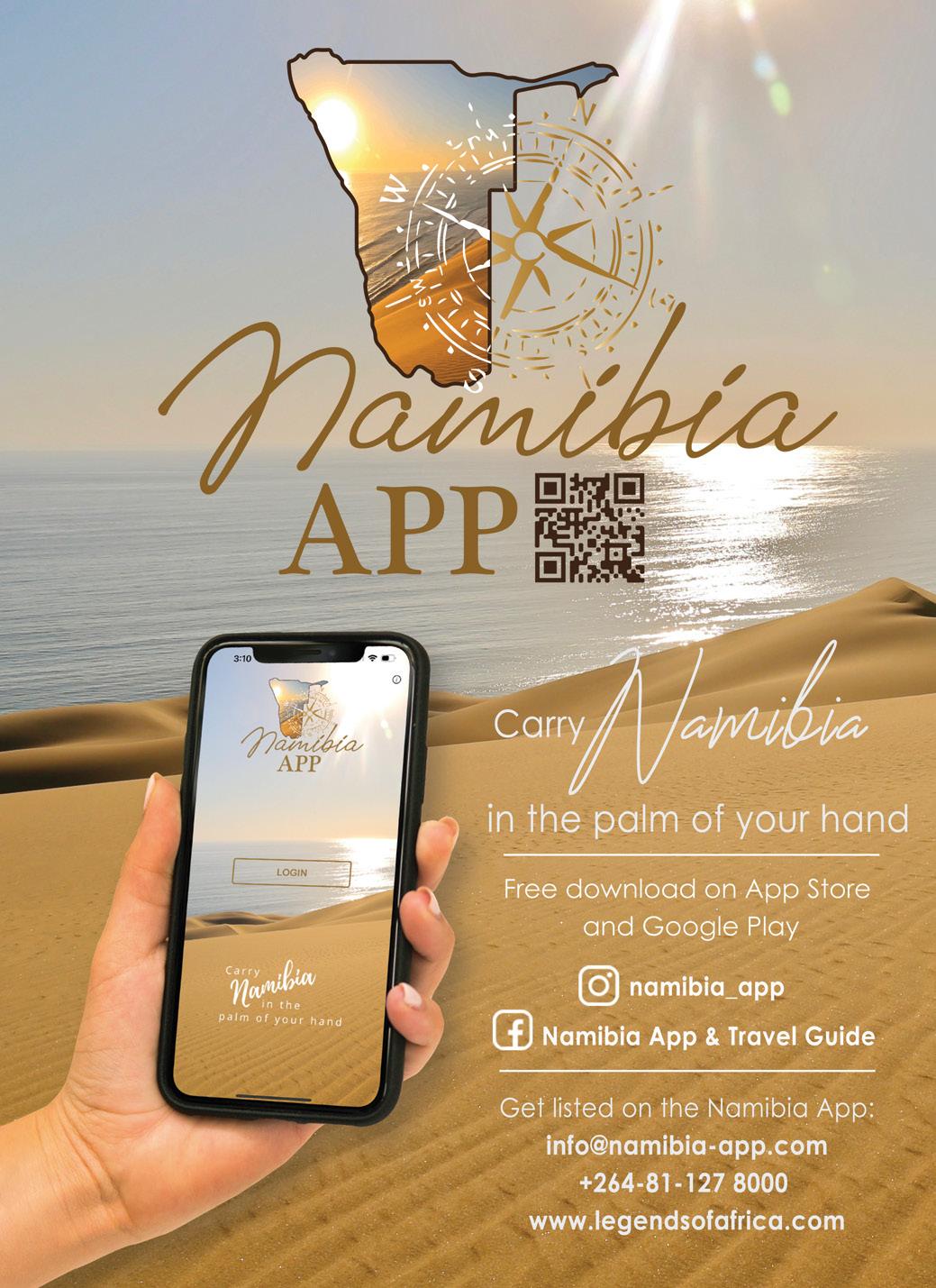









U.S. President Lyndon B. Johnson signed into law the historic Civil Rights Act in a nationally televised ceremony at the White House.
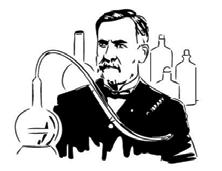
Although he was not certain that the vaccine would work, French microbiologist Louis Pasteur successfully gave the first anti-rabies vaccination to nine-year-old Joseph Meister, who had been bitten by an infected dog.

Bastille Day commemorates the storming of the Bastille, that ignited the French Revolution, in 1789.
Nelson Mandela (1918 - 2013) was born in Mvezo, South Africa.

On this day the first atomic bomb was detonated on the barren plains of Alamogordo Bombing Range, New Mexico. A nuclear test bomb with a mushroom cloud 12.5 kilometres high.

Neil Armstrong made history by taking the first step on the moon while declaring, “That’s one small step for man, one giant leap for mankind!”

July is named after Julius Caesar, the prominent Roman general.

On July 5, 1946, the world witnessed the debut of the first bikini at Paris' Piscine Molitor swimming pool.
Louis Bleriot became the first man to fly an aircraft from one country to another successfully. He took off from the coast of France and landed across the channel near Dover, England.
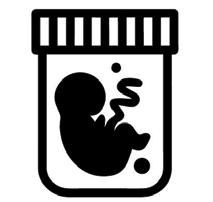
Louise Brown, the world’s first ‘test-tube baby’, was born in Oldham General Hospital in England. Her mother, Lesley Brown, first underwent what we now recognise as IVF (in vitro fertilisation) under the supervision of gynaecologist Dr Patrick Steptoe and physiologist Dr Robert Edwards in November 1977. Her daughter, Louise, was born by caesarean section.

and Craniofacial




July’s birthstone is the ruby.
The goal of Sudoku is to fill a 9×9 grid with numbers so that each row, column and 3×3 section contain all of the digits between 1 and 9.
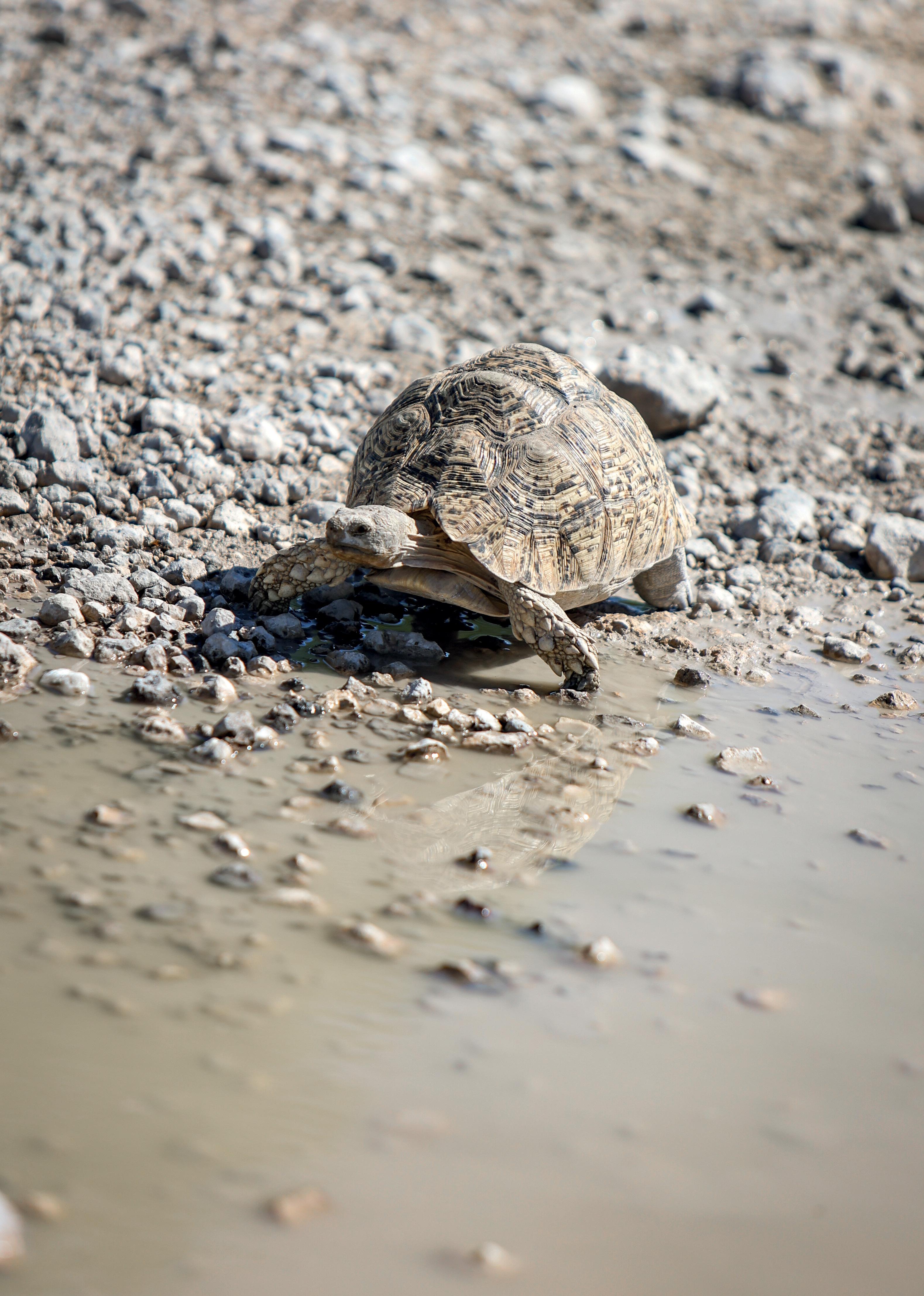
Slow (wild) and Steady | The Leopard Tortoise, a common sight in Namibia, can live up to 60 years in the wild. Sadly, many people mistakenly "rescue" these creatures, not realising it's a crime to capture them without a permit, with severe penalties for offenders. Leopard Tortoises are vital to the ecosystem, spreading grass seeds through defecation and surviving without human interference. They need a variety of wild grass and plants to remain healthy, and wild adult tortoises do not adapt well to captivity. To ensure their survival, protect their habitat and refrain from capturing them. They are wonderful denizens of the wild, not pets.
Elzanne McCulloch - Etosha National Park
